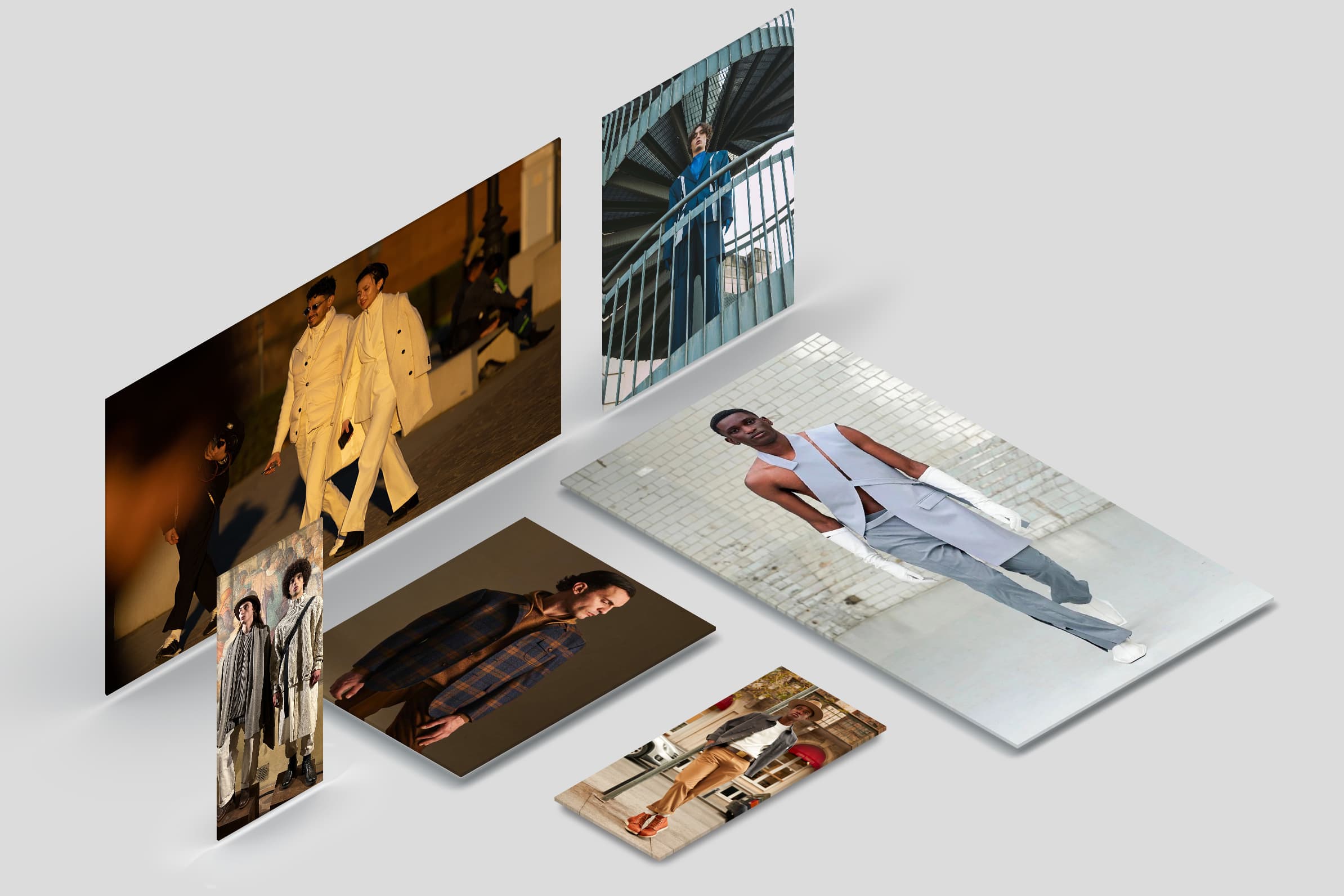The Ushering in of a New Era of Menswear Dress Codes
By Angela Baidoo
Taking place at the start of the year and kicking off the official whirlwind of fashion-fuelled globe-trotting, the Winter Edition of Pitti Uomo – the trade fair of note for the men’s fashion and lifestyle market – sets the tone for the upcoming season.
This January’s event, which took place between 10-13th January at the Fortezza de Basso in the Tuscan capital of Florence, saw the event come roaring back with a strong offering for all, setting out to command others to follow the ‘Pitti Way’ as the direction of travel for menswear. Innovation was presented side-by-side with heritage and tradition, and many exhibitors made a concerted effort to meet the needs of a consumer shift towards a more comfort-driven mindset.
Taking a holistic approach to consumer desire, this season’s event focussed on a holistic approach to lifestyle needs. It was business as usual for the formalwear brands – although there was a softening around the edges with plush fabrics and more unstructured silhouettes – but this was juxtaposed with new projects which saw the return of a section dedicated to “experimental outdoor clothing”, S/Style which provided a platform for those brands embedding sustainable processes and developing responsible fashion collections, and two new areas which sit slightly outside the field of fashion – Pets and Interiors – yet suit the new mood of lifestyle expansion, which is blending categories for the hybrid way we are living today.
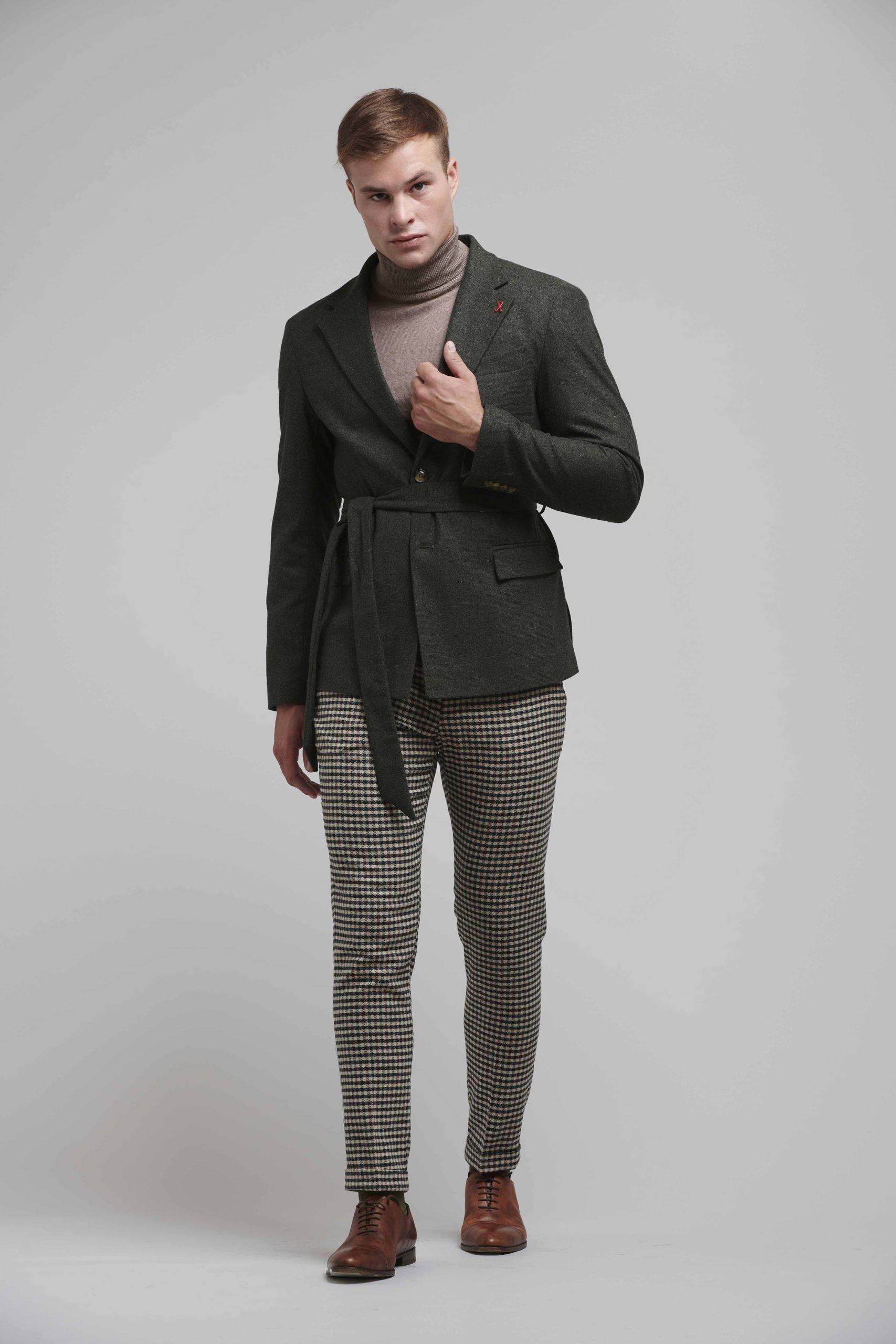
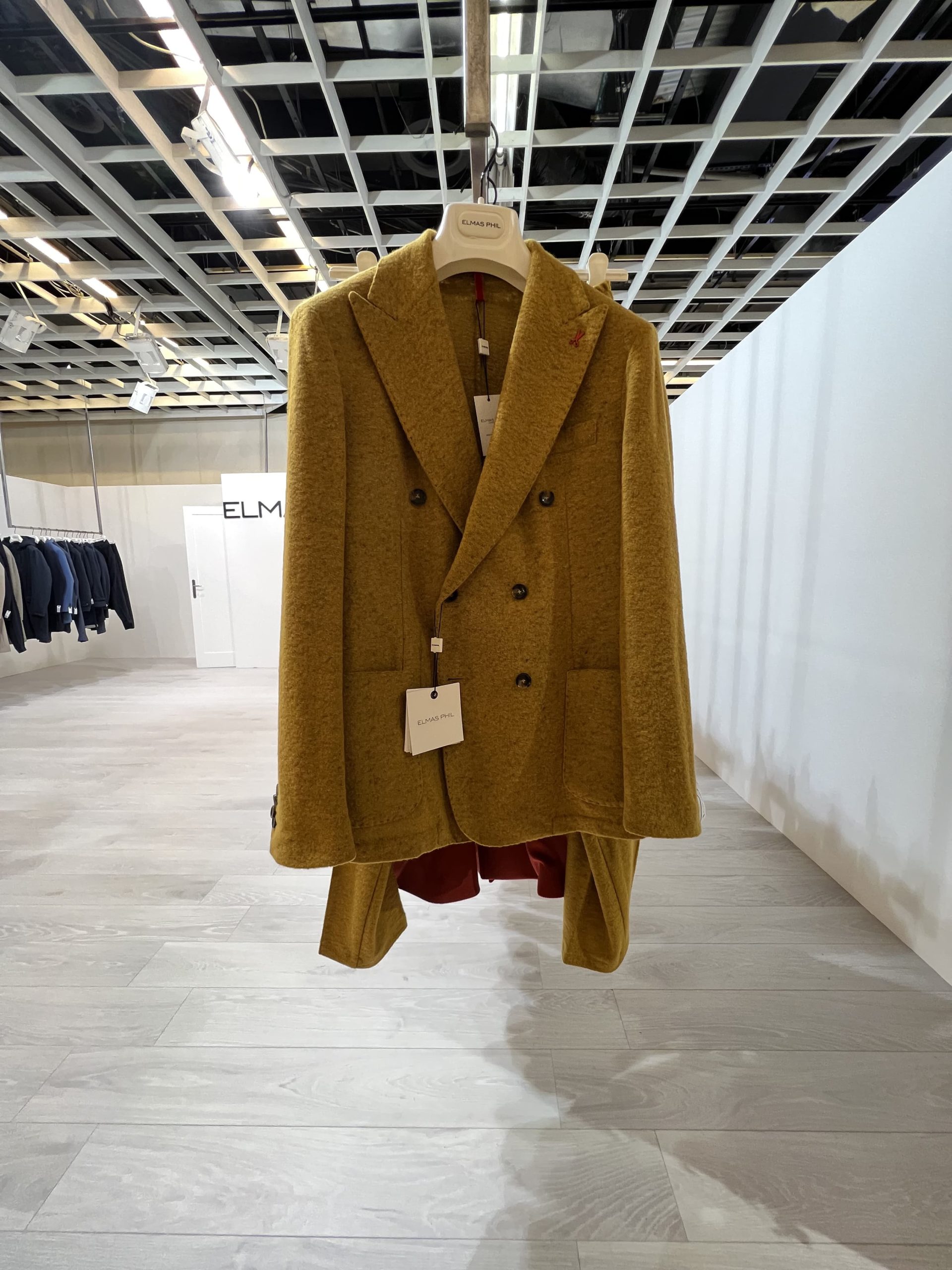


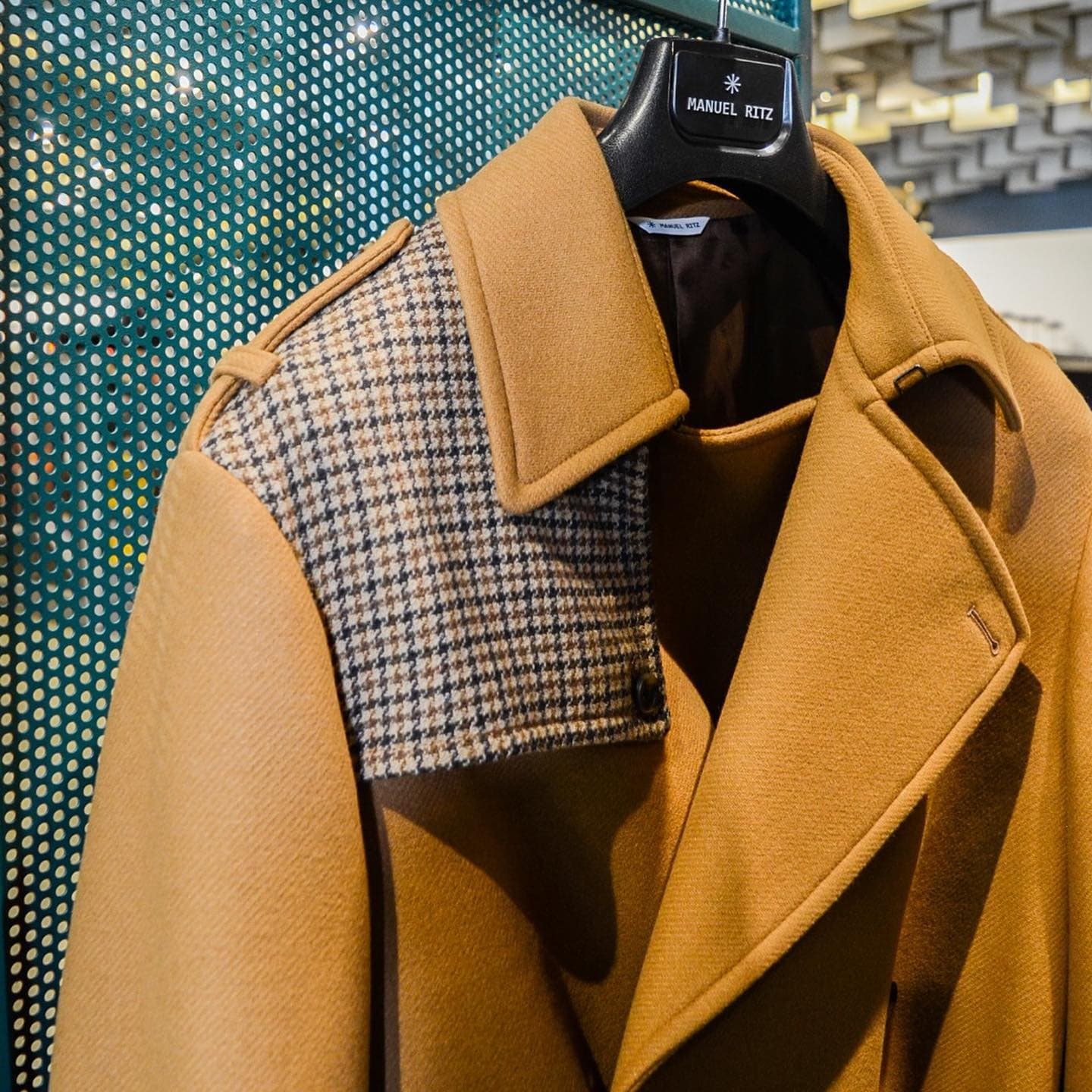
Pitti Uomo 103 gave us the most expansive look at the most achingly forward menswear innovations, and a curiously contradictory microcosm of uber-formal fairgoers, who seemed like a throwback to a bygone era, or a glimpse into the return to a more suited and booted sensibility.
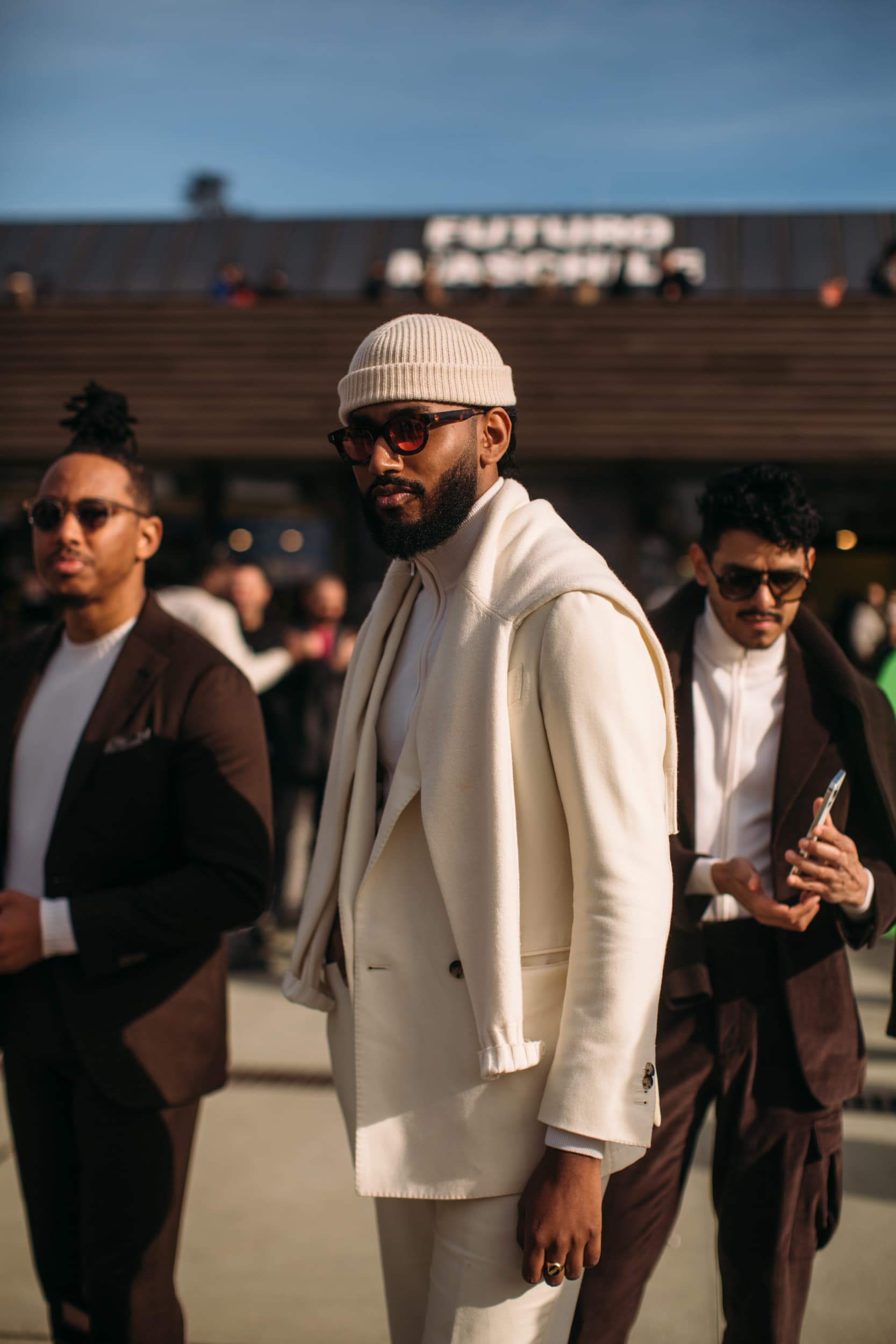

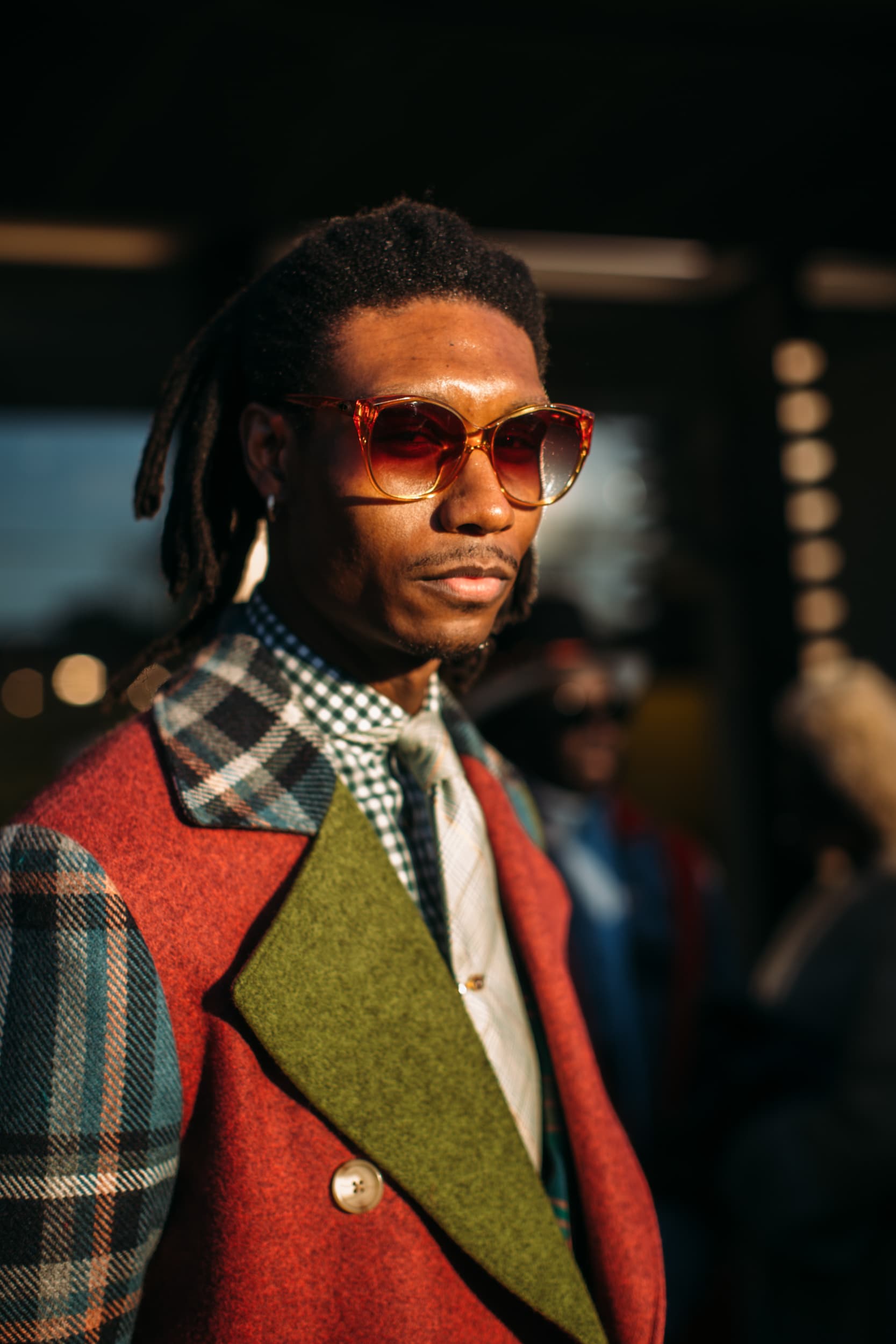
Index
- Formalwear finds its Footing.
- Trickle-up theory: The Everyday Desirability of Denim
- Trickle-up theory: Starting from the Bottoms
- And relax: The Rise of Cosy Culture
- Sustainability through Durability
Formalwear finds its Footing
The menswear market is still a space which finds comfort in catering to its tribal factions, as men (and fair goers for that matter) continue to sit and consume within very specific identities. Whether due to the effects of the pandemic or a shift in the new rules of what it means to be masculine, there were some welcome discernible changes that were seen throughout the event. Menswear is moving on and looking ahead in an optimistic new direction, that is saying you can still dress to the codes of your particular tribe, but also 1) care about the clothes you are investing in 2) buy better, quality goods, and 3) Expect to be delighted in the everyday.
It was no surprise to note a return to formalwear, which plays into the new mood for getting dressed again. This didn’t mean rigid corporate dressing was back, far from it, as without having been privy to the most recent men’s runway collections of Milan and Paris, many brands had already conceded to this new way of thinking and were aligning themselves with providing solutions for this cross-pollination between the casual and formal worlds, without creating a whole new genre.

By re-introducing, or even re-working formalwear in the guise of well-made tailoring and quality accessories, there was a general consensus at the fair of brands taking on the ambitious task of educating their customers on how to fall in love with their clothing again, by forming a connection with the pieces they choose to invest in for now and for the next 10 years.
BRAND FOCUS – STILE LATINO Conveys a sense of true understated, everyday luxury, with the presentation of their Fall Winter 2023 collection at Pitti Uomo. Speaking with Cesare Mattia Attolini (the son of Stile Latino founder Vincenzo Attolini), he highlighted that the collection was “fully handmade (in Naples), but has a contemporary feel, which gives you freedom”, a growing expectation from today’s demanding consumer who has shed the strict rules of formal dressing. Stile Latino has chosen to abandon stereotypes and the idea of “formal and rigid elegance”, but instead aspires to “dress today’s man [who] orients his preferences towards a softer taste, an effortless elegance”. For Fall there was a reliance on traditional elegance to inform silhouette, but in fit, each garment had a ‘very relaxed attitude’, with the addition of travel wear, as well as home and lounge. A modern application of the 26 looks is their modular capability, allowing each garment to be altered through layering, according to the team this translates to “the presence of versatile garments, each combinable with the other without subtracting value from the final result, giving rise to infinite look possibilities”. Reflecting the shifting sensibilities of today’s consumer, the collection’s key message is ‘Take Care’, a mantra that relies on the belief that each garment “will take care of you [and] it can accompany you for a long time on the wonderful path that is your life”
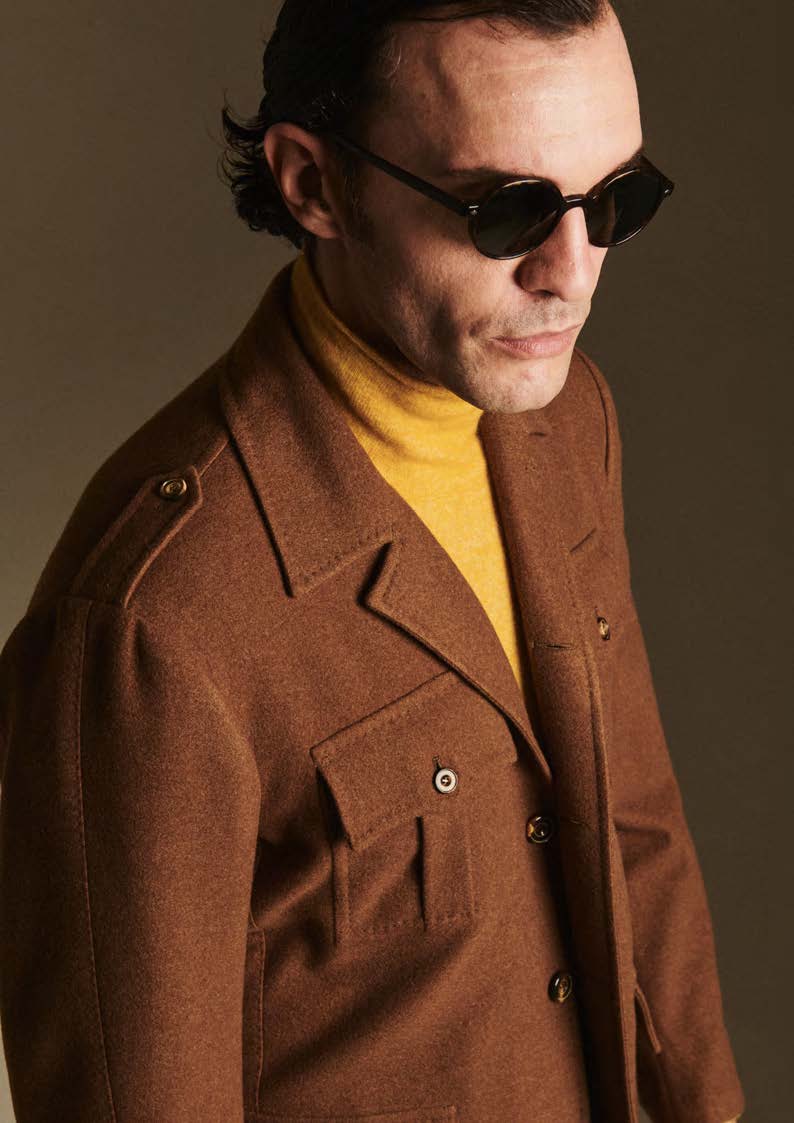
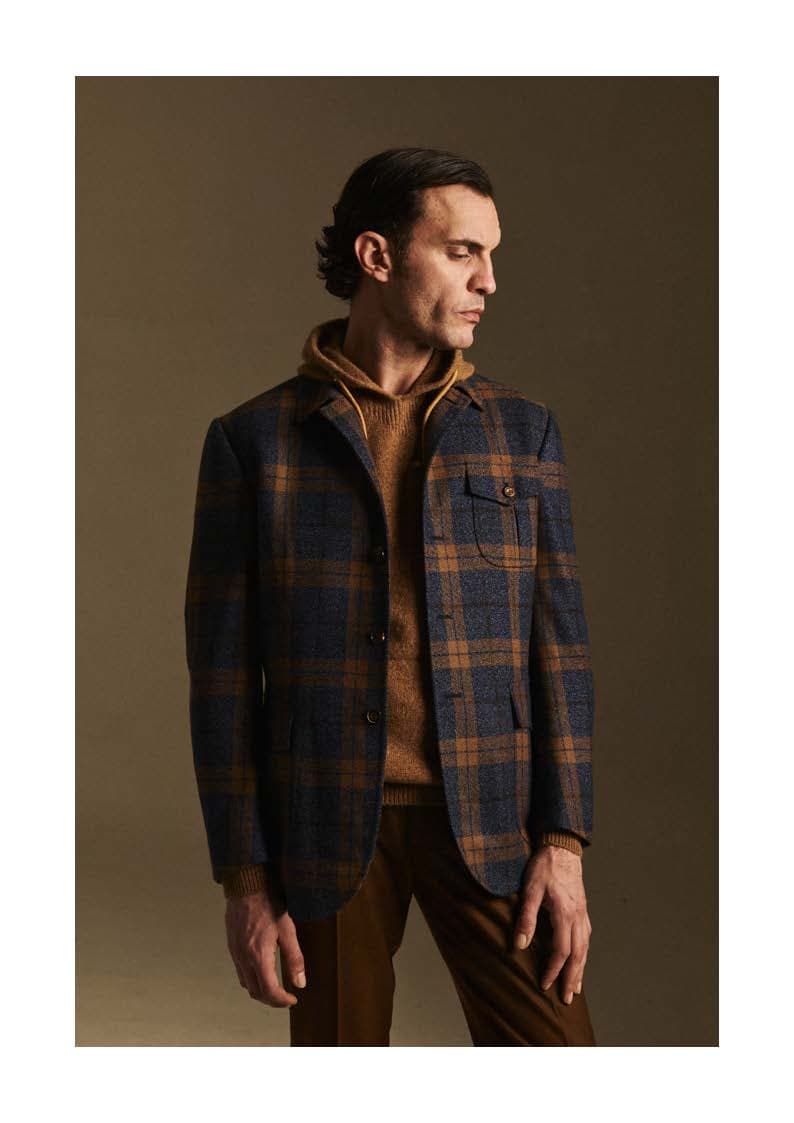


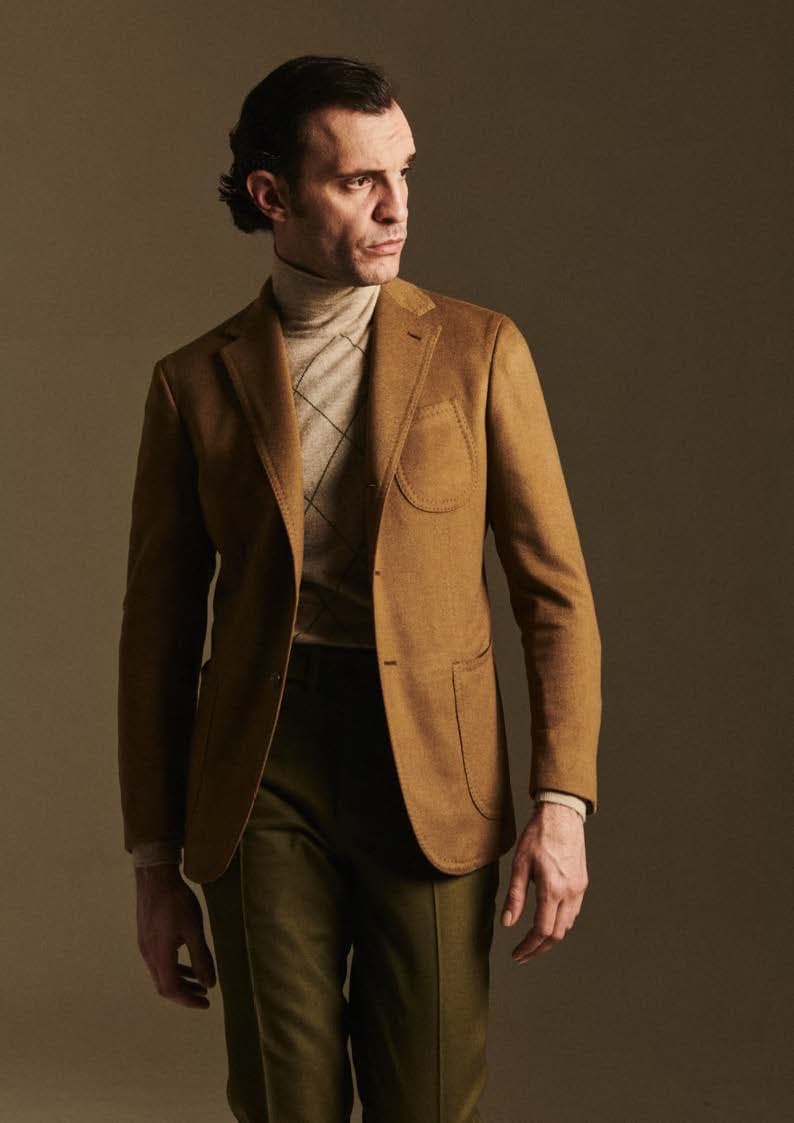

Trickle-up theory – The Everyday Desirability of Denim
Straddling the space between the casual jogger and the tailored pant, denim was revitalized as a year-round staple to be explored as a practical wardrobe addition with the penchant to slip into the world of luxury living, as cashmere blends and the expertise of tailored constructions were applied to rebrand the five-pocket pant.
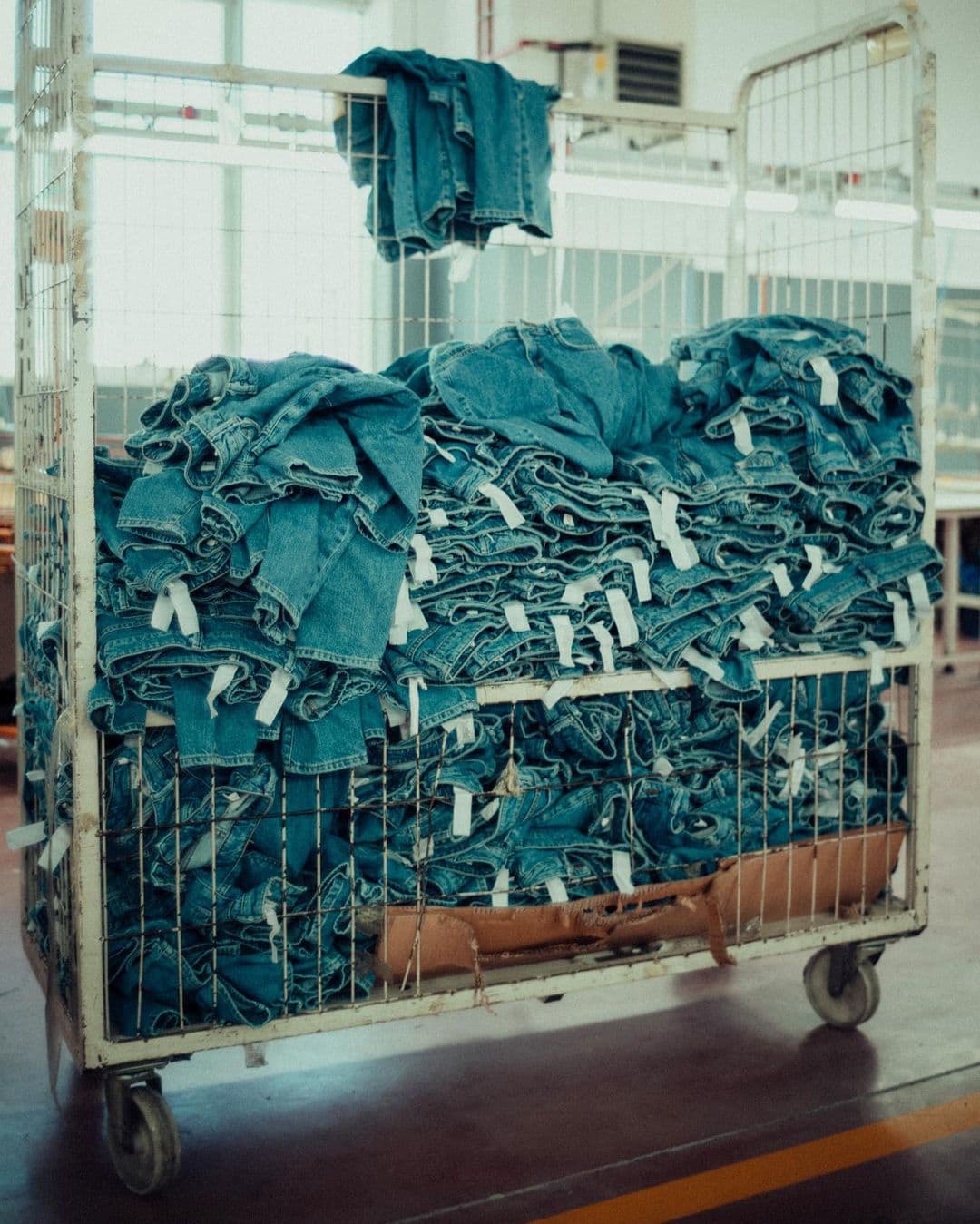


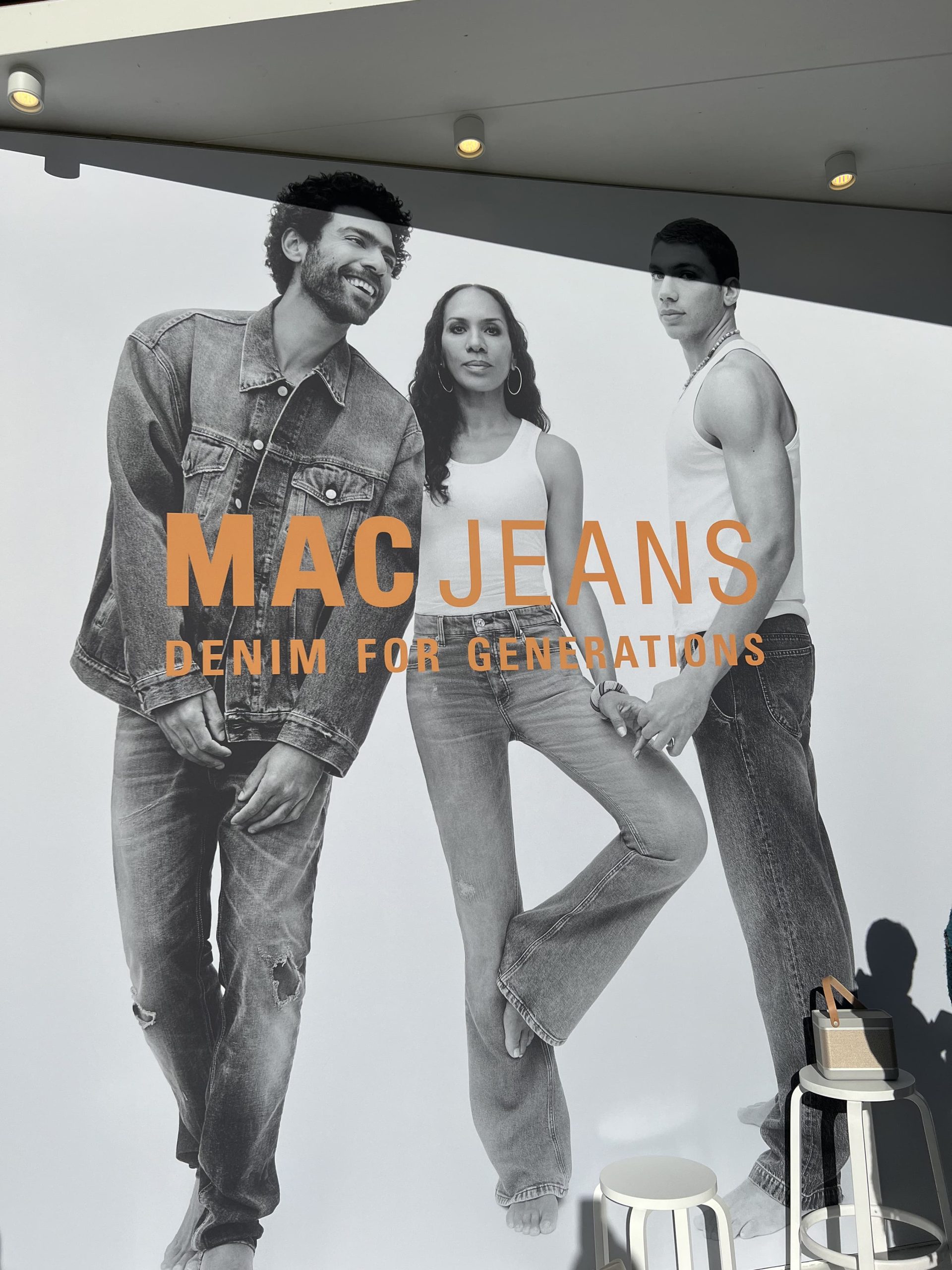
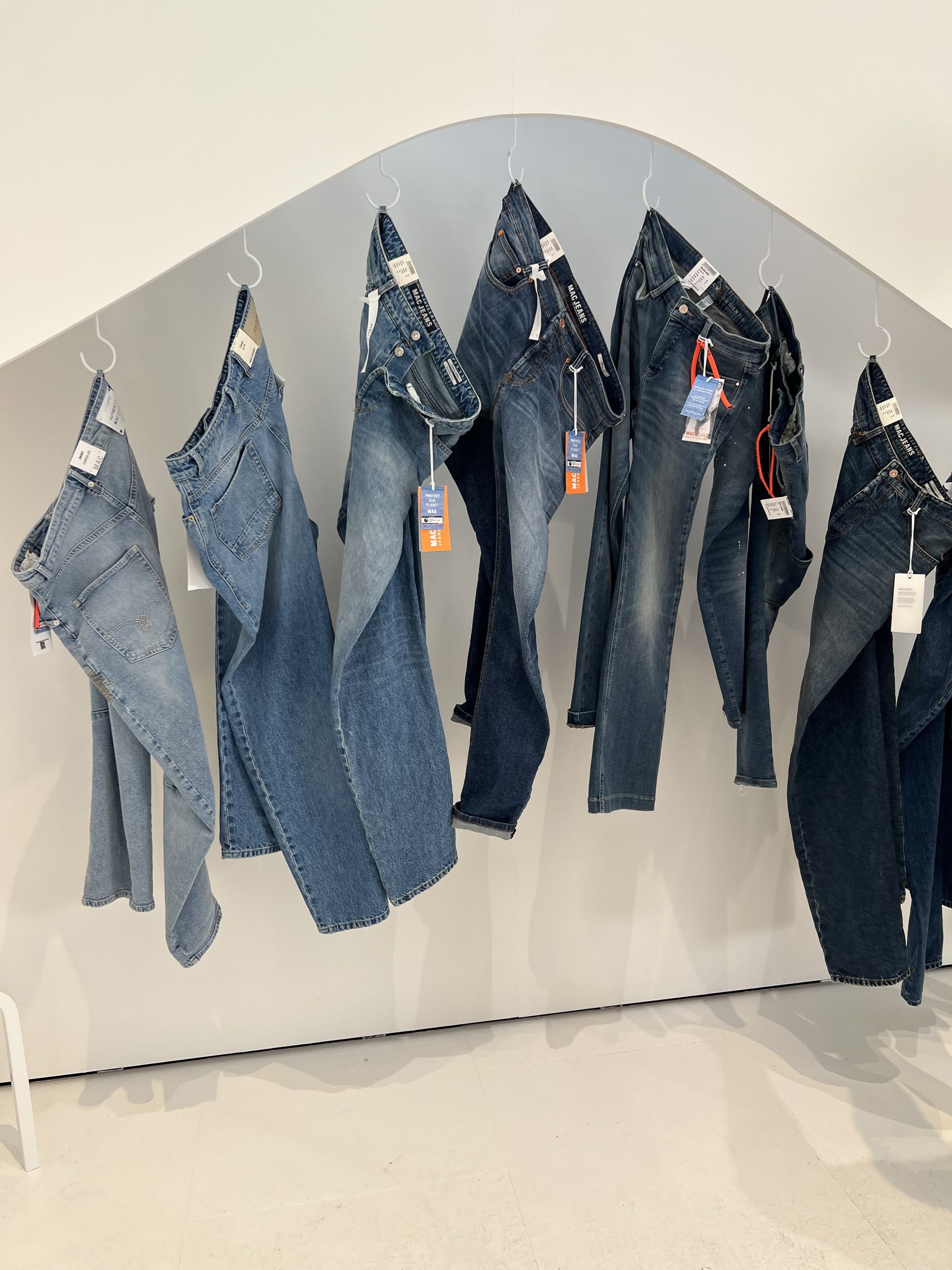
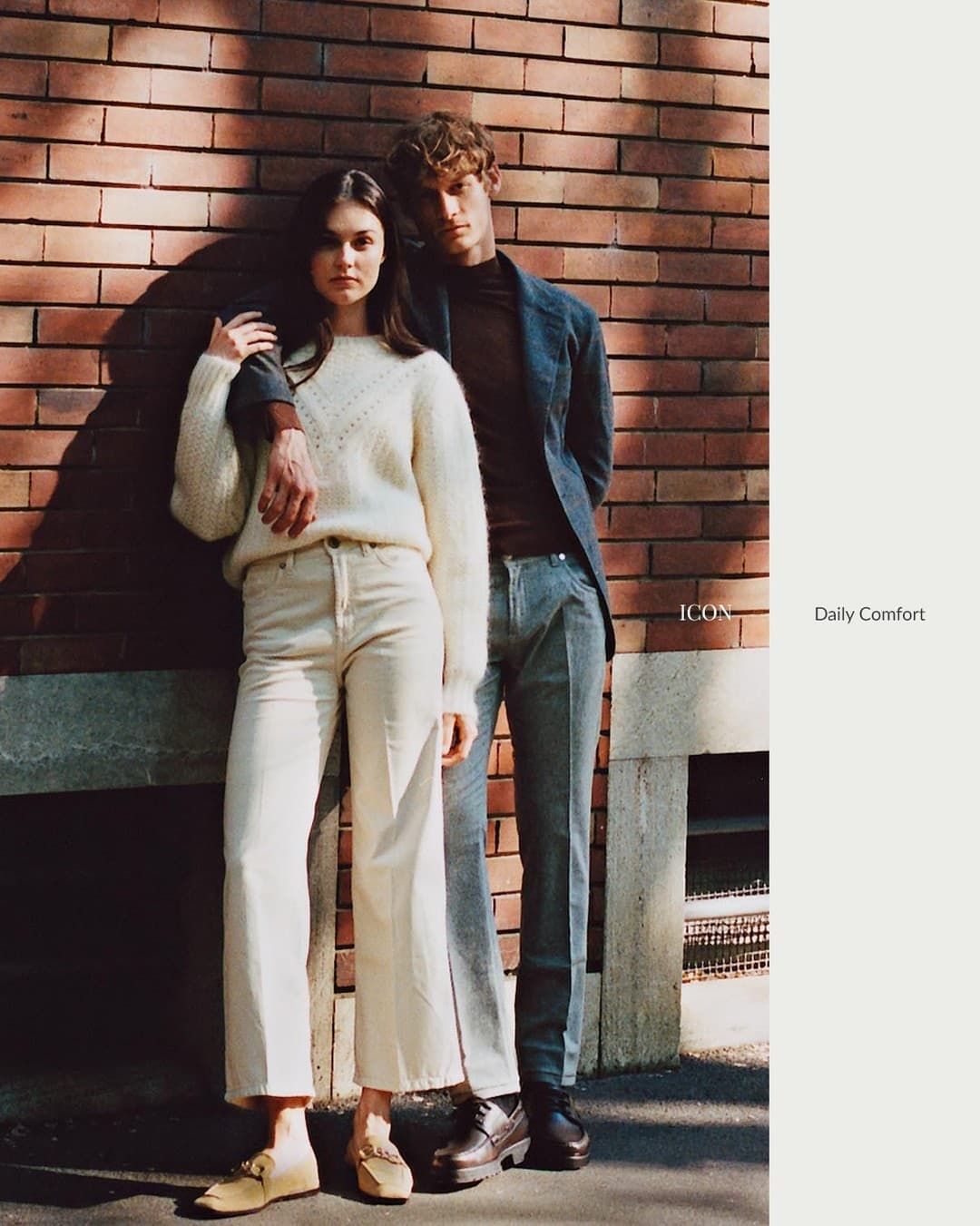
Incotex Blue Division Profile: Marco Bernardini, CEO, Slowear and Marco Muggiano, Chief Marketing Officer, Slowear
Part of the Slowear group, Incotex’s Blue Division is a ‘Made in Italy’ tailored denim brand, which for Fall Winter 2023 presented its latest collection “devoted to redefining five-pocket pants”. The Impression sat down with Marco Bernardini and Marco Muggiano to discover the three pillars of the brand’s fourth collection, and their determination to bring ‘creativity, innovation and technical expertise to the service of denim.’
Angela Baidoo: Can you talk us through some of the inspirations behind the three different strands – the Superior Line, the Couture Line, and the Lab Line – of the Fall Winter 2023 collection?
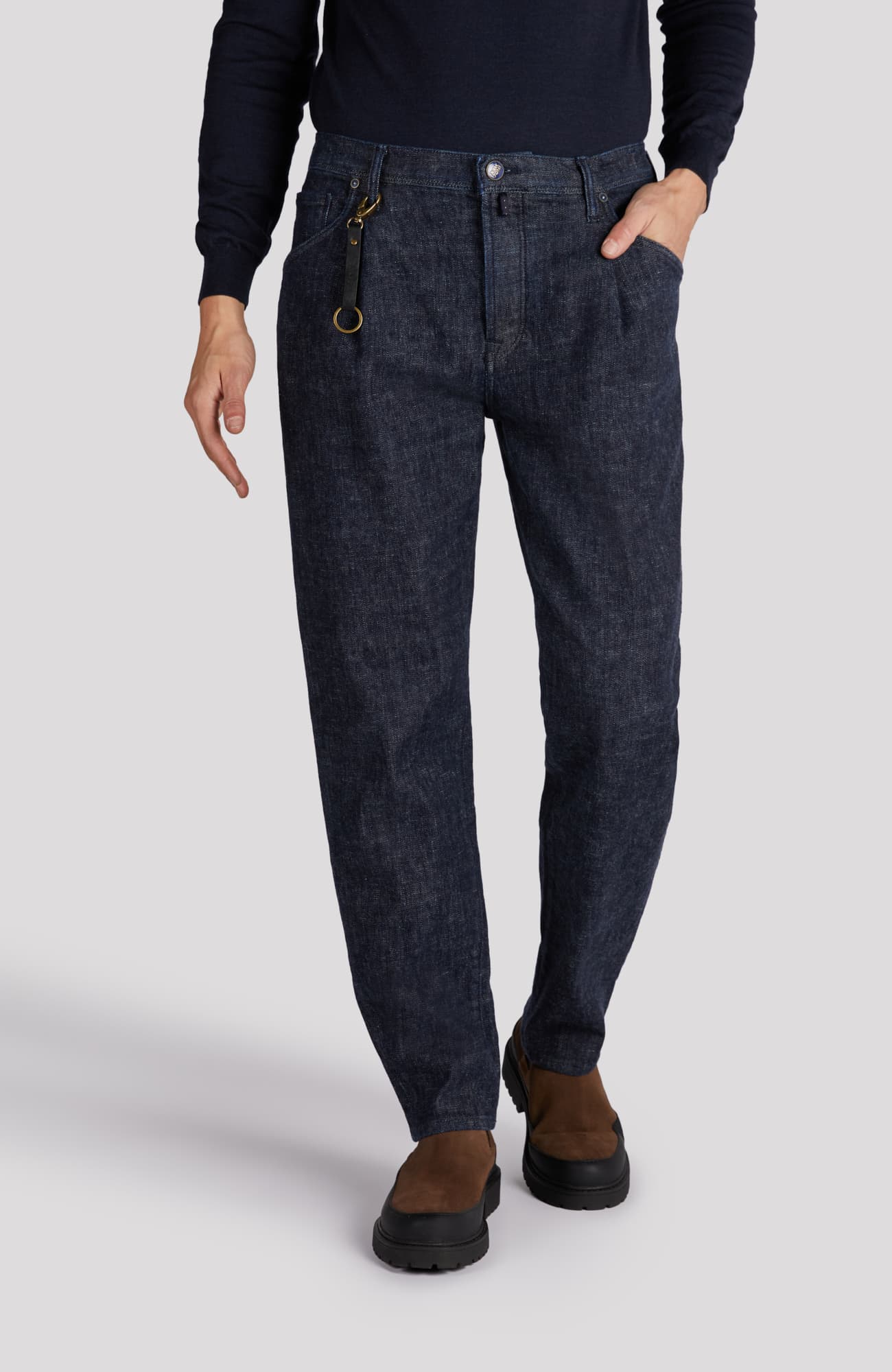
Marco Muggiano: Last season we introduced the Couture Line, which is a hybrid between the sartorial trouser and denim, there are a lot of details which come from a typical sartorial trouser from the 1940s that are applied to the denim world. But this year we are focussing on pushing boundaries with The Lab collection, where we are merging hybrid materials, models, and concepts. We are always thinking about two products for hybridization, for example we have taken the chino that we have blended with denim, and that’s the concept of The Lab Line, trying to push boundaries on the production and engineering processes. The Couture Line is the quintessential denim with a typical sartorial construction, you will see double pleating which is very difficult to do on denim.
Angela Baidoo: Have you decided to tap into hybridization because of the way the world has changed today?
Marco Muggiano: During Covid we saw a strong change in the wardrobe. We were home and we were basically wearing track pants and the jacket, so the top part was very professional, and the below part was basically loungewear. So, we changed our approach to the product slightly, we discovered a more comfort fit, a little bit of a looser vibe because you want to be comfortable in your wardrobe. Before Covid comfort was secondary, appearance was first, now it’s a mixture of the two.
What we see with Slowear as a conglomerate is that there is a return to the blazer paired with a trouser, so there is a return to the trouser in the wardrobe. Most men tend to look for a good jacket and then they pair the trouser, in our world it is the other way around. That’s why we are putting a lot of effort in creating trousers which are very unique and special, because that is what our customers are asking us for.
Angela Baidoo: How have you seen the customer change over the last few years, and how are you continuing to meet the needs of that changed customer?
Marco Bernardini: Yes there is a change, and as Marco (Muggiano) was saying during the pandemic we saw a kind of change, and of course we have followed this change, but we have our [own] approach, when we speak about fashion, we are also talking about something that is far from fashion, its something that, despite the different trends, we want to propose [an alternative].

Angela Baidoo: And how have you positioned the Incotex Blue Division to stand out in a crowded denim market?
Marco Muggiano: Let me say first of all, we are not the latest kids on the block, we have made trousers since 1951, that heritage is the first guarantee, so there is a point when heritage, history, and competence should have value in the market. Second, this is not normal denim, it is denim coming from Incotex, the best trouser producer in the world, this is recognized by many in the industry, so I think that is an important aspect. Incotex has been making denim, and we have specialized in more sartorial and traditional casual styles.
As part of this exercise that we are launching for Pitti Uomo we have underlined the 3 souls of the collection, the Couture Line which is the hybridization of the sartorial trouser with denim, and it is the piece which makes the difference in the collection, it’s also the most successful because it is has a nice story around it, because denim is denim, it’s difficult to innovate in that world. The Couture Line is the new approach to denim, it’s a little bit dressier than what we are used to, we created that piece to live nicely with a derby shoe or with a blue blazer. It’s a special product and something you won’t find just anywhere in the market.
Angela Baidoo: Lastly, how do you hope to meet the upcoming challenges of the menswear market in 2023?
Marco Bernardini: During 2023 we want to consolidate our retail (distribution) network and focus on our wholesale channel. In the recent past we focussed on many new retail openings. During the pandemic we opened 6 new stores, and we focussed on e-commerce and the digital channel. We want to continue what we started last year, which is to focus on our 400 wholesale customers, in order to start again a new relationship with them because it’s very important for us, as now wholesale makes up 60% of our sales, and 40% is owned channel. So, we need to focus on them, because they are the first page, the first relationship with the customer. And so, during 2023 what we want to focus on is this challenge, as after the pandemic the world is not the same. And from 2023 and beyond we want to invest in new openings, but at the moment we want to consolidate our network.

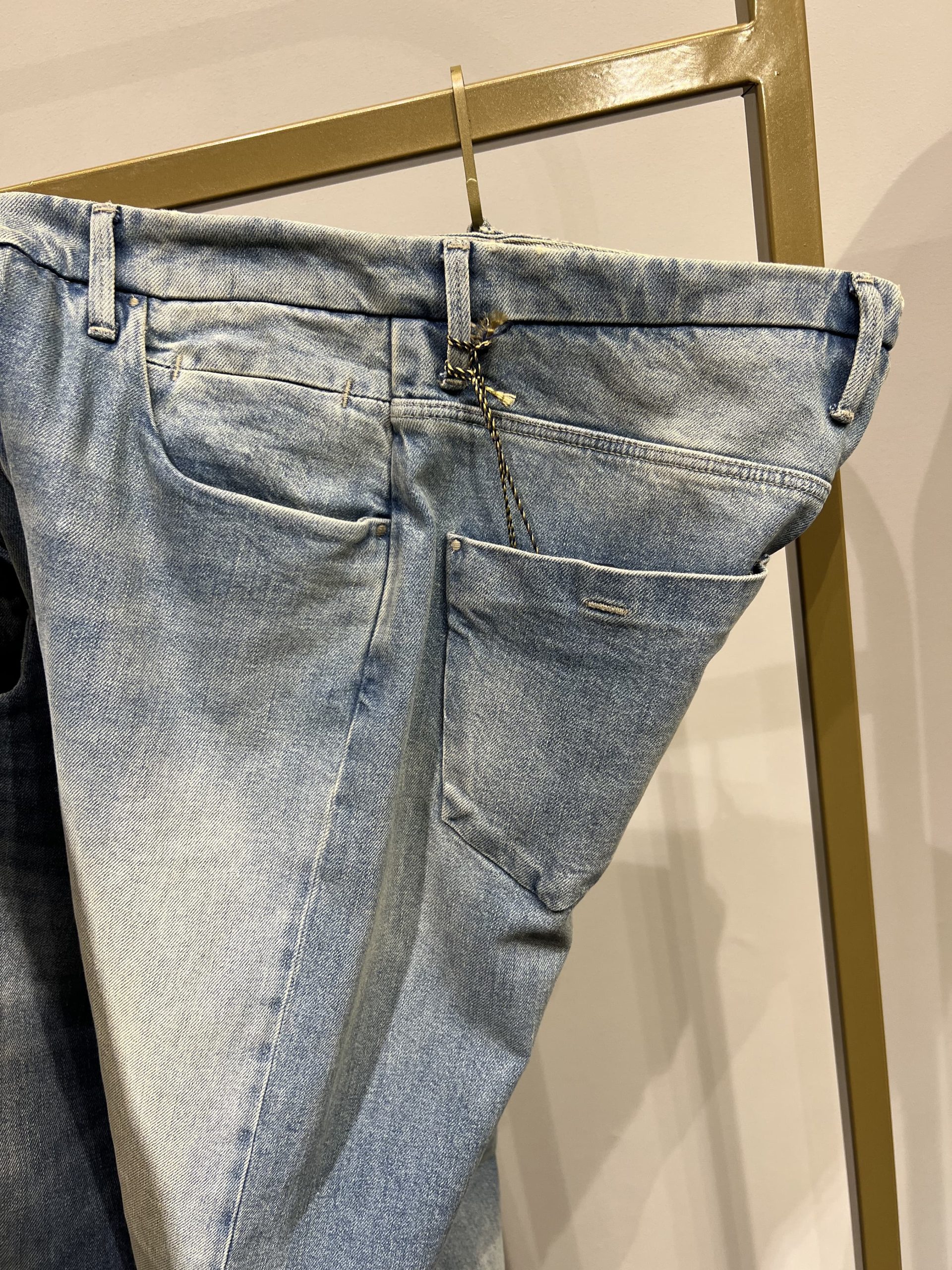

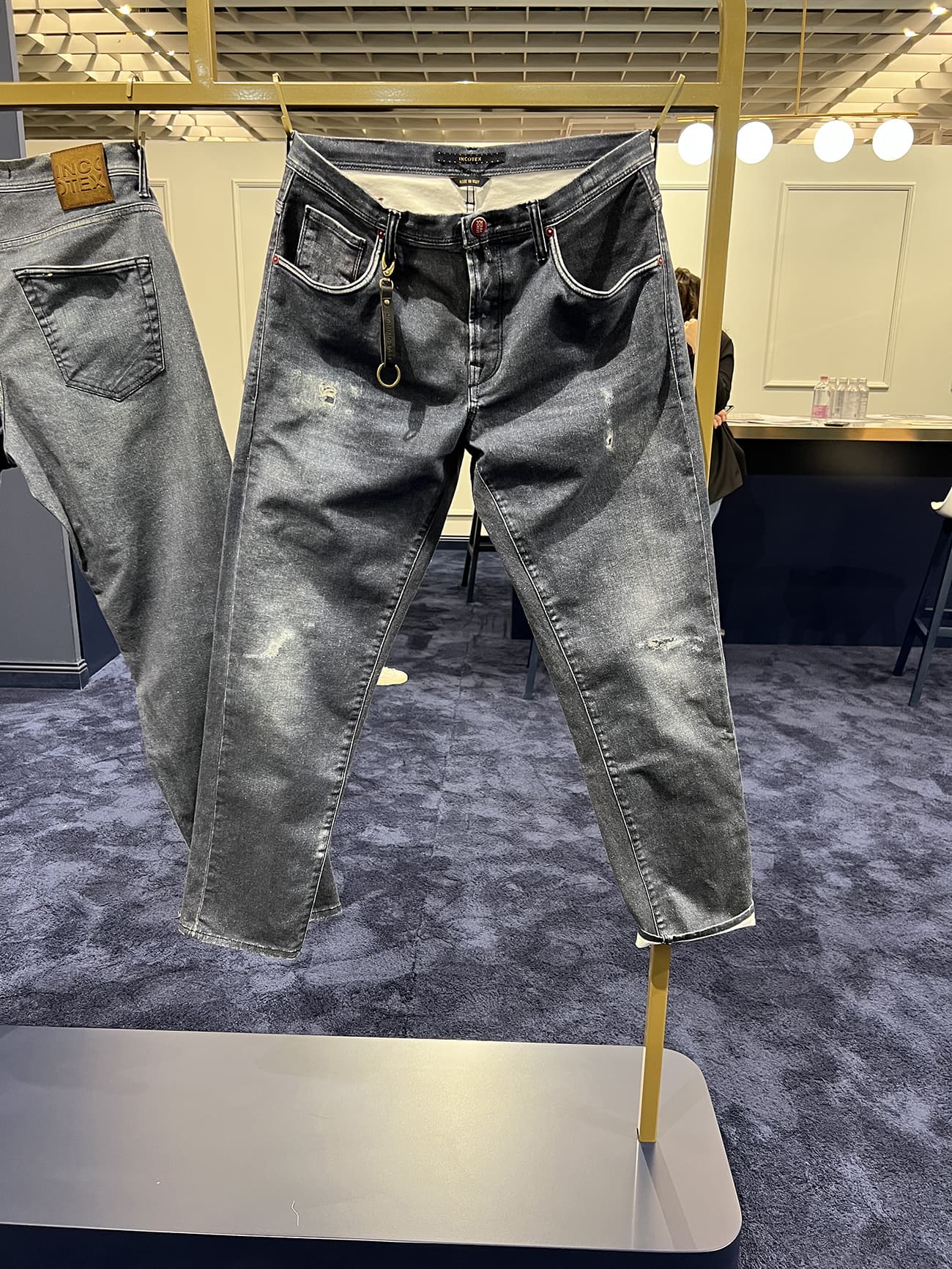
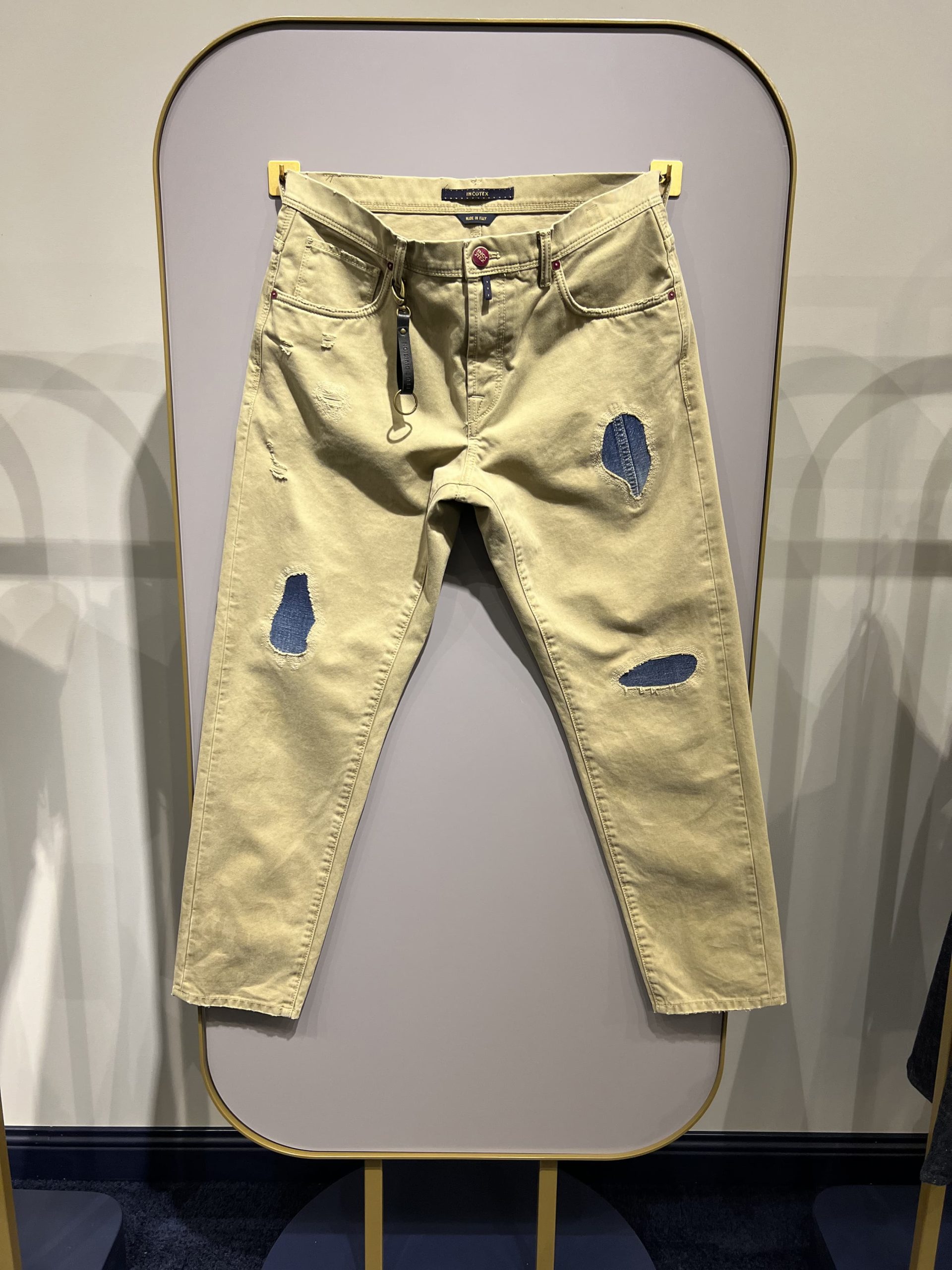
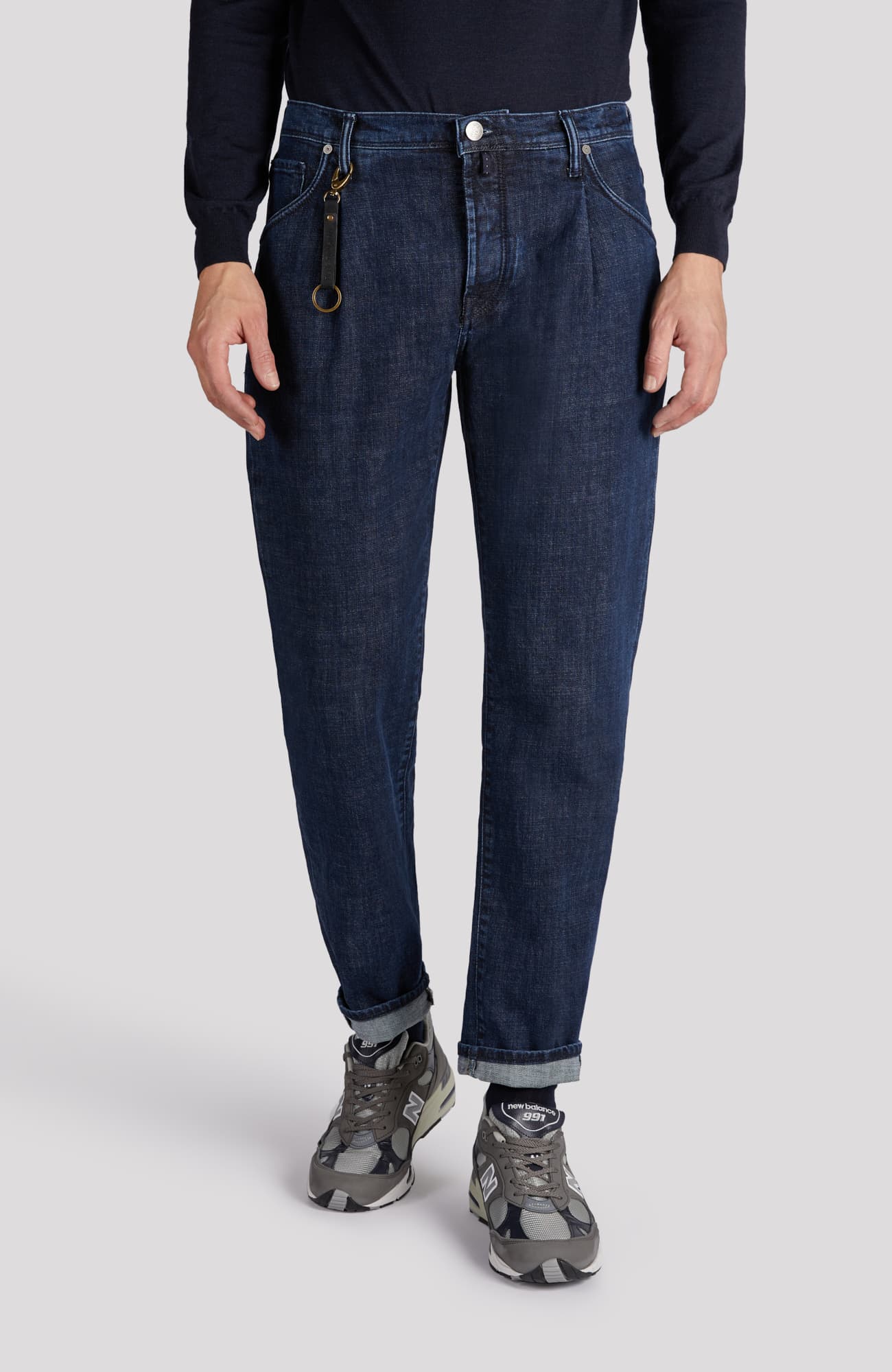
Trickle-up theory – Starting from the Bottoms
After a sustained period of focus on the upper body, due to it being the main area on display during virtual meetings, there was exponential growth in investment in the bottoms category, as brands at the fair doubled down on the potential of the trouser in all its guises.
Traditional tailored styles came with a twist as interesting details provided a seasonal update. Utility trims, elasticated waists (Handpicked), cargo pockets, and sleek hardware replace ostentation. Fits were relaxed while still remaining refined (Be Able), as the importance of timeless silhouettes extends to both casual and tailored trousers.
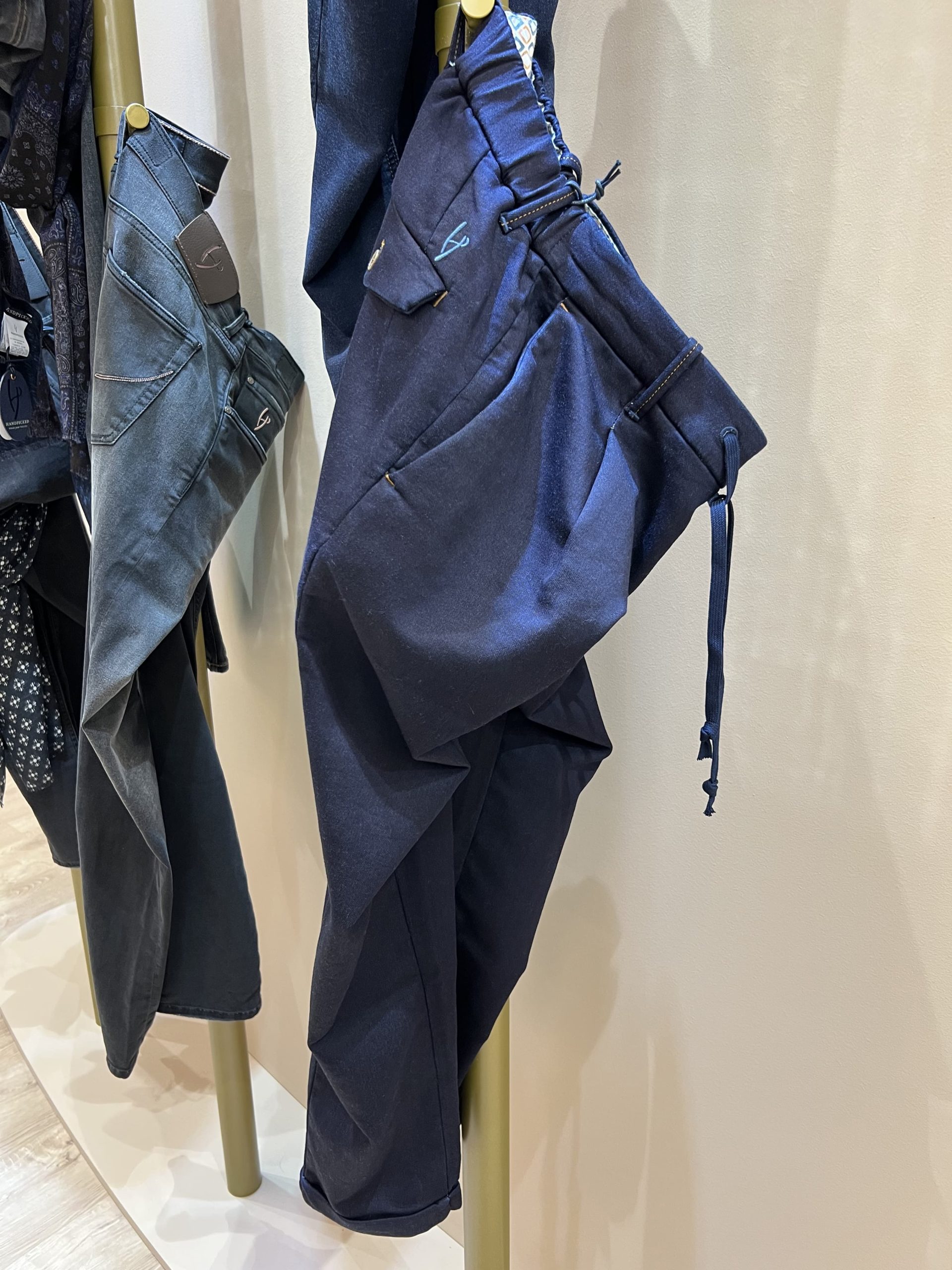



An array of choice across the colour spectrum will allow for consumers to celebrate their personal style, whether with neutrals of off-white (Briglia 1949), grey marl, or tan or richer tones (40 Weft) of teal, mustard, and orange. There were also brands (Berwich) who were pushing the boundaries with deep purples and acid yellows especially for styles to be worn in the Great Outdoors.

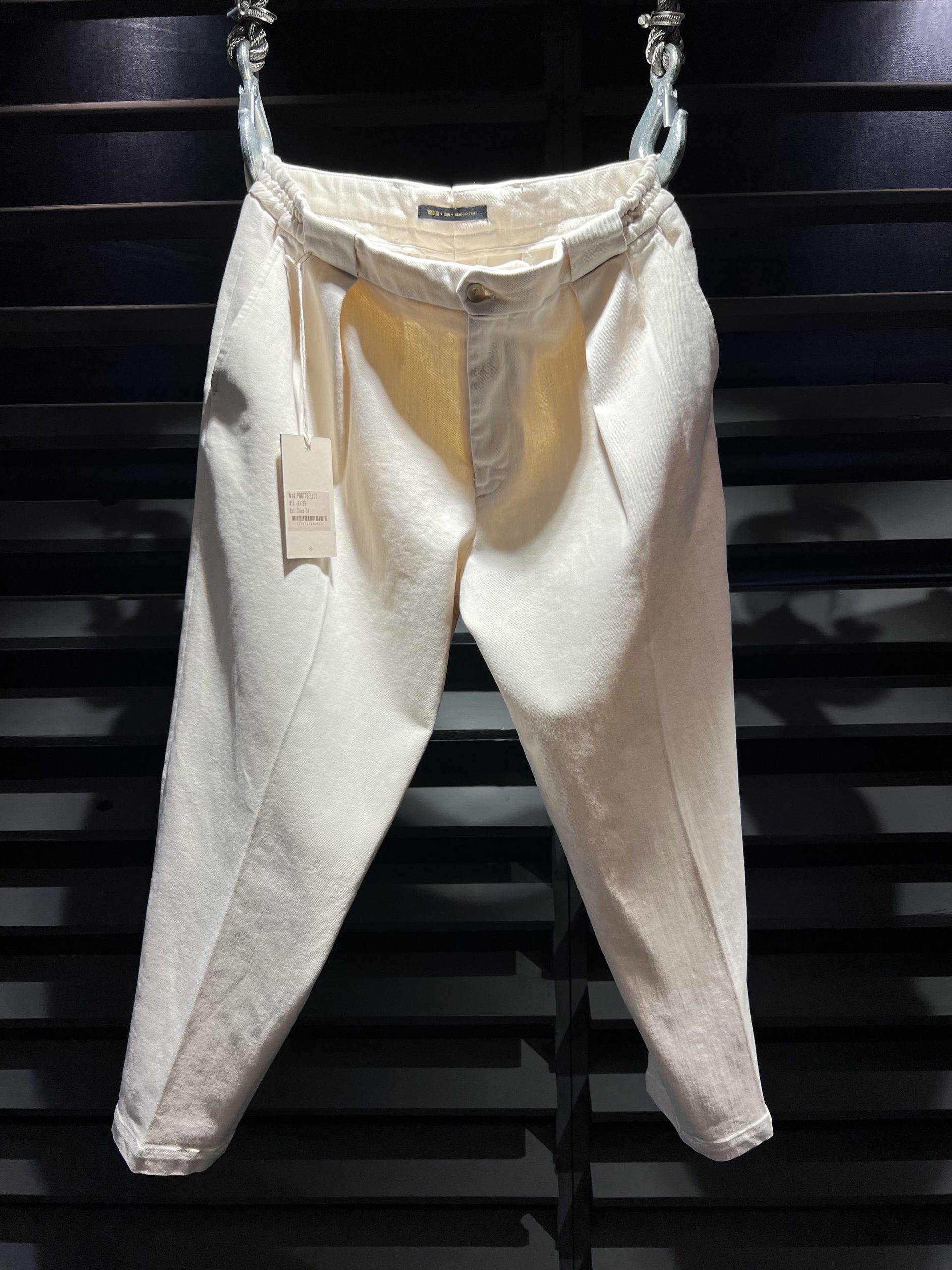
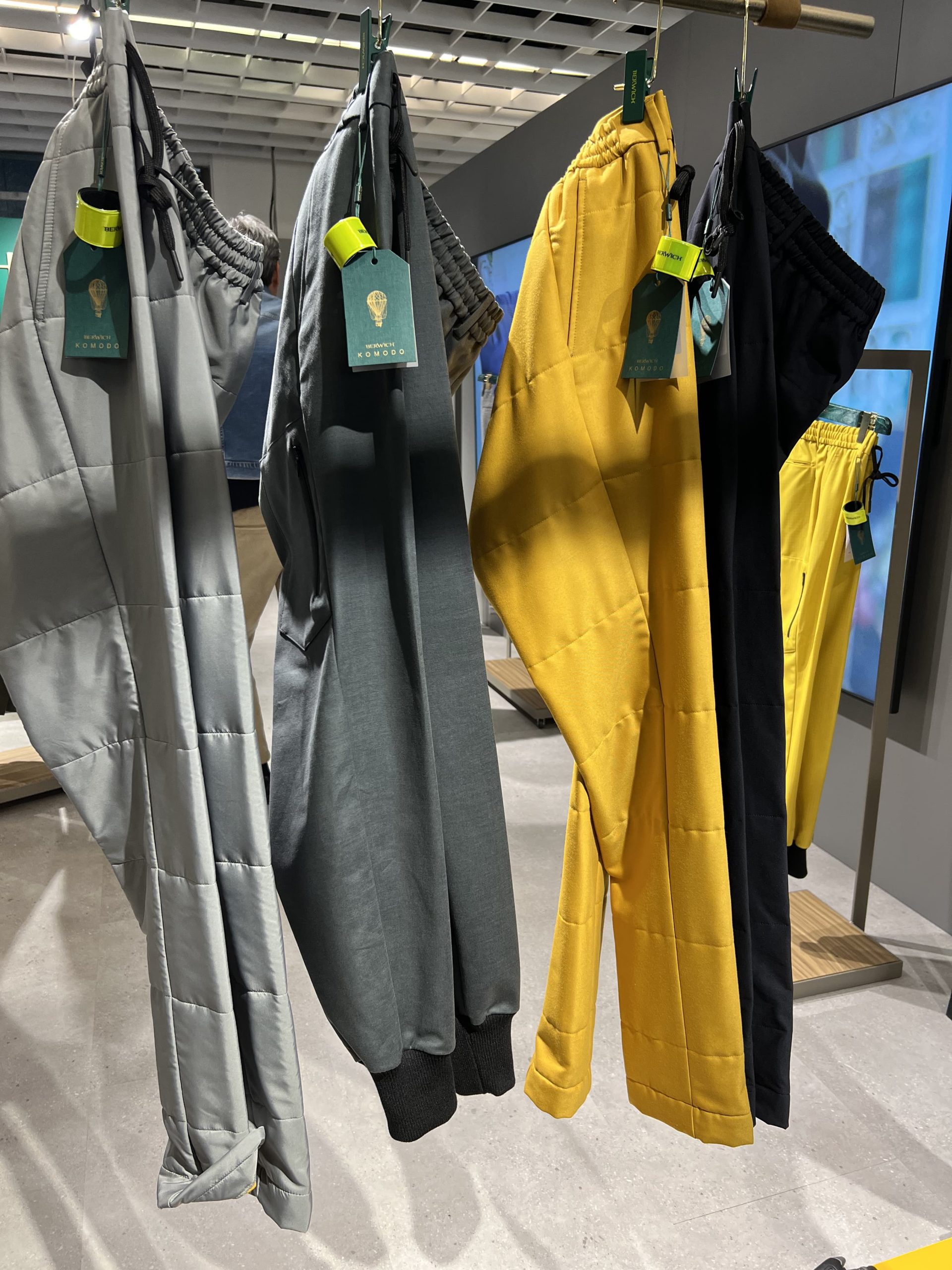
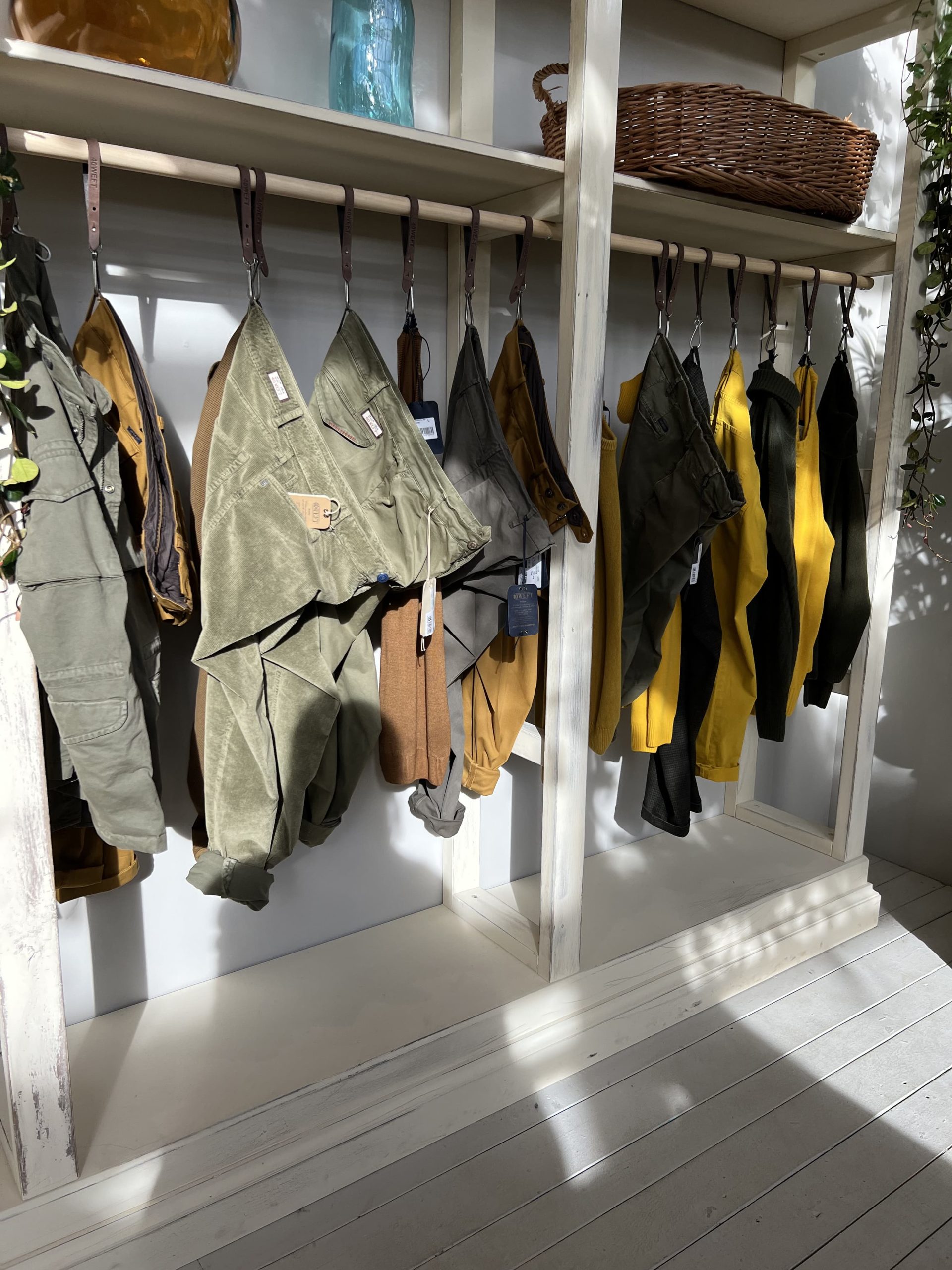
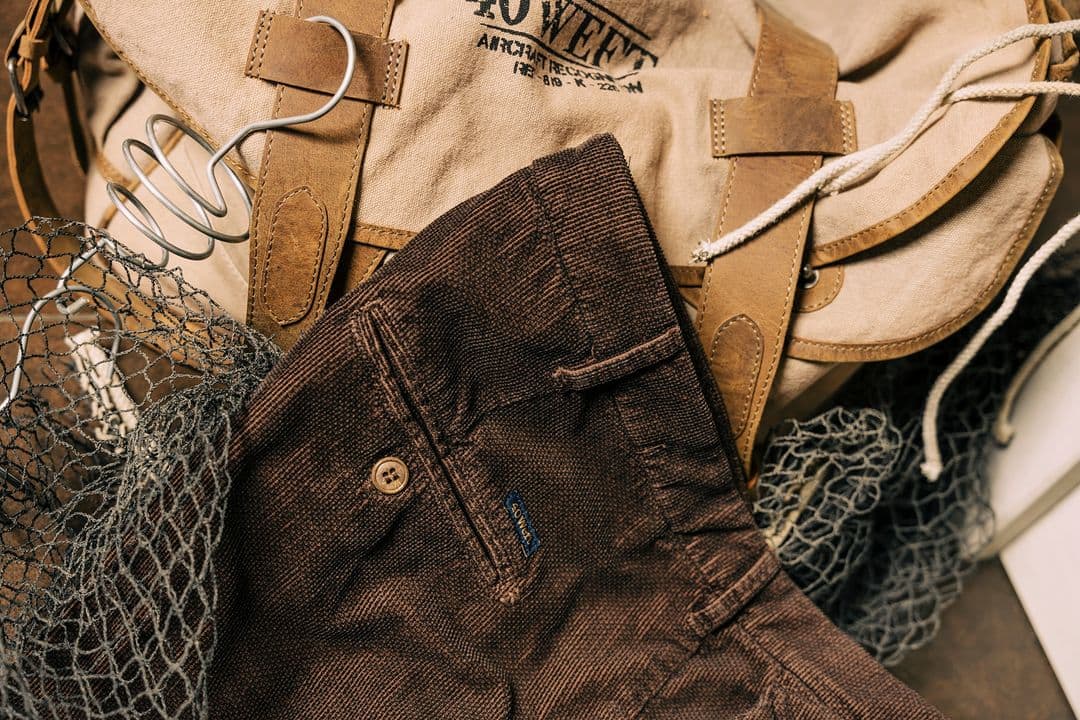
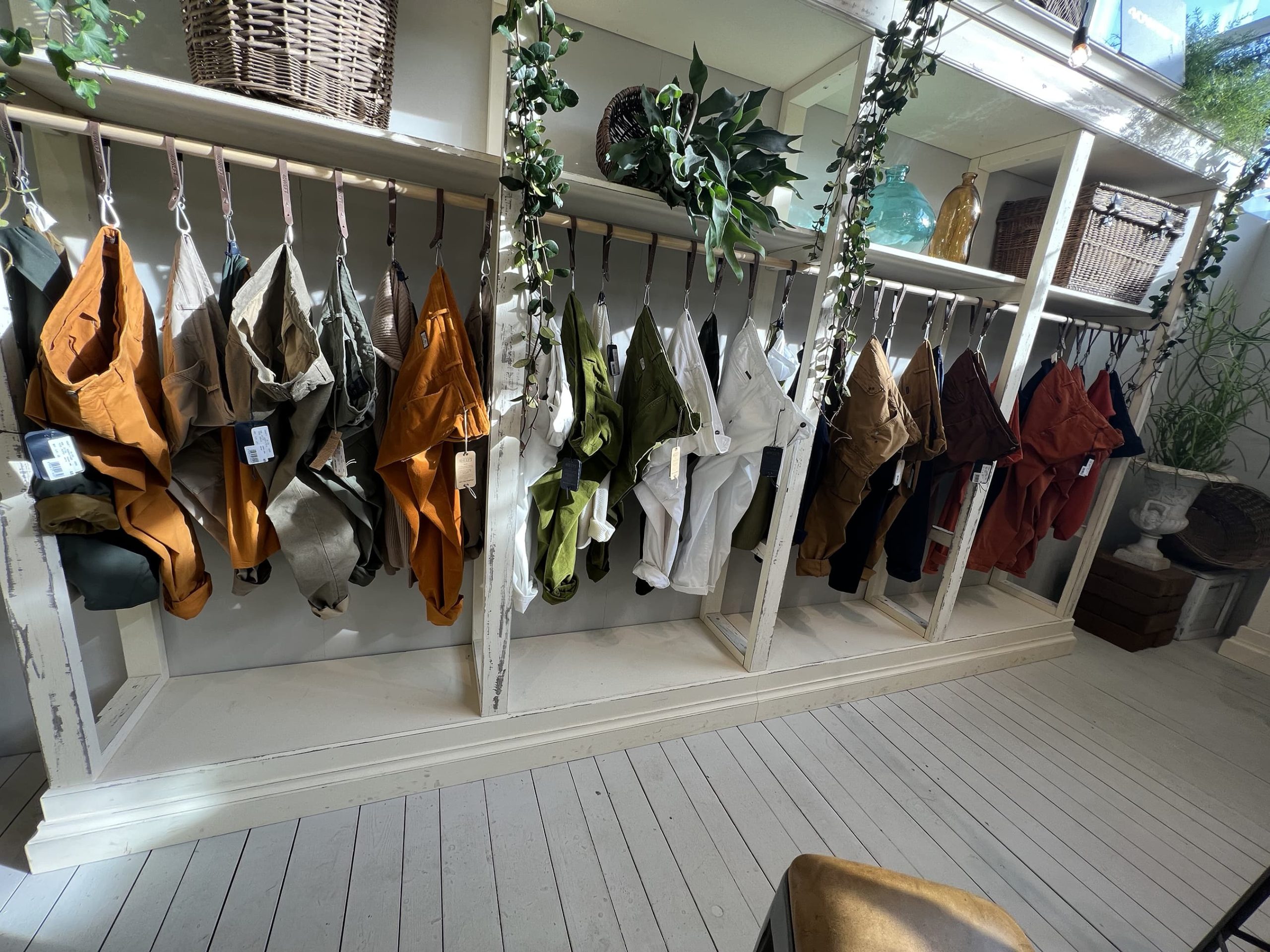
And Relax – The Rise of Cosy Culture
As the anti-thesis to a climate of constant hard knocks – climate, finances, living – fashion is becoming less extreme and more comforting – a safe space to land for the male consumer. What is different this go-round is the sweats of old are nowhere to be seen, and instead there has been a levelling-up of the new hybrid uniform. Soft surfaces of suede and knit replace structured wools and twills for outerwear, tailoring loses its stiff framework and functions from a place of fluidity, and cashmere-everything is the way to do loungewear for Fall Winter 2023, with the luxury material even finding its way into the design of layering shackets and duffle ‘coats’, proving it’s versatility and innovative qualities.
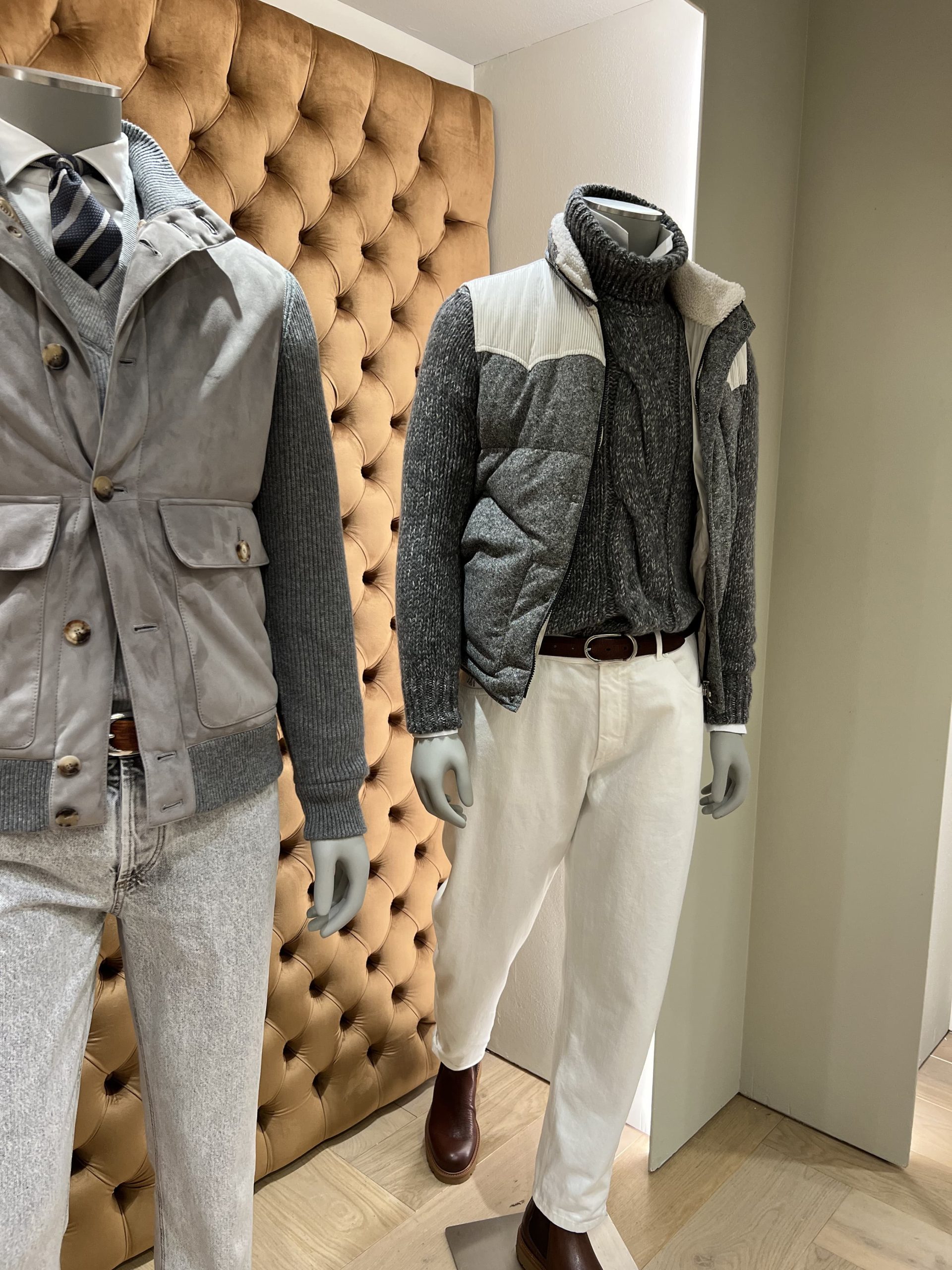


Tactility played a key role at Pitti Uomo 103, as every surface was an invitation to touch. Fuzzy felted wool, ‘hairy’ yarns, jumbo cords, and sporty fleeces were reworked in a vibrant palette of pop-colours, blurred tie-dye effects, and cable-knit sweater updates, bringing to the fore much more choice for approaching casual dress codes than ever before.

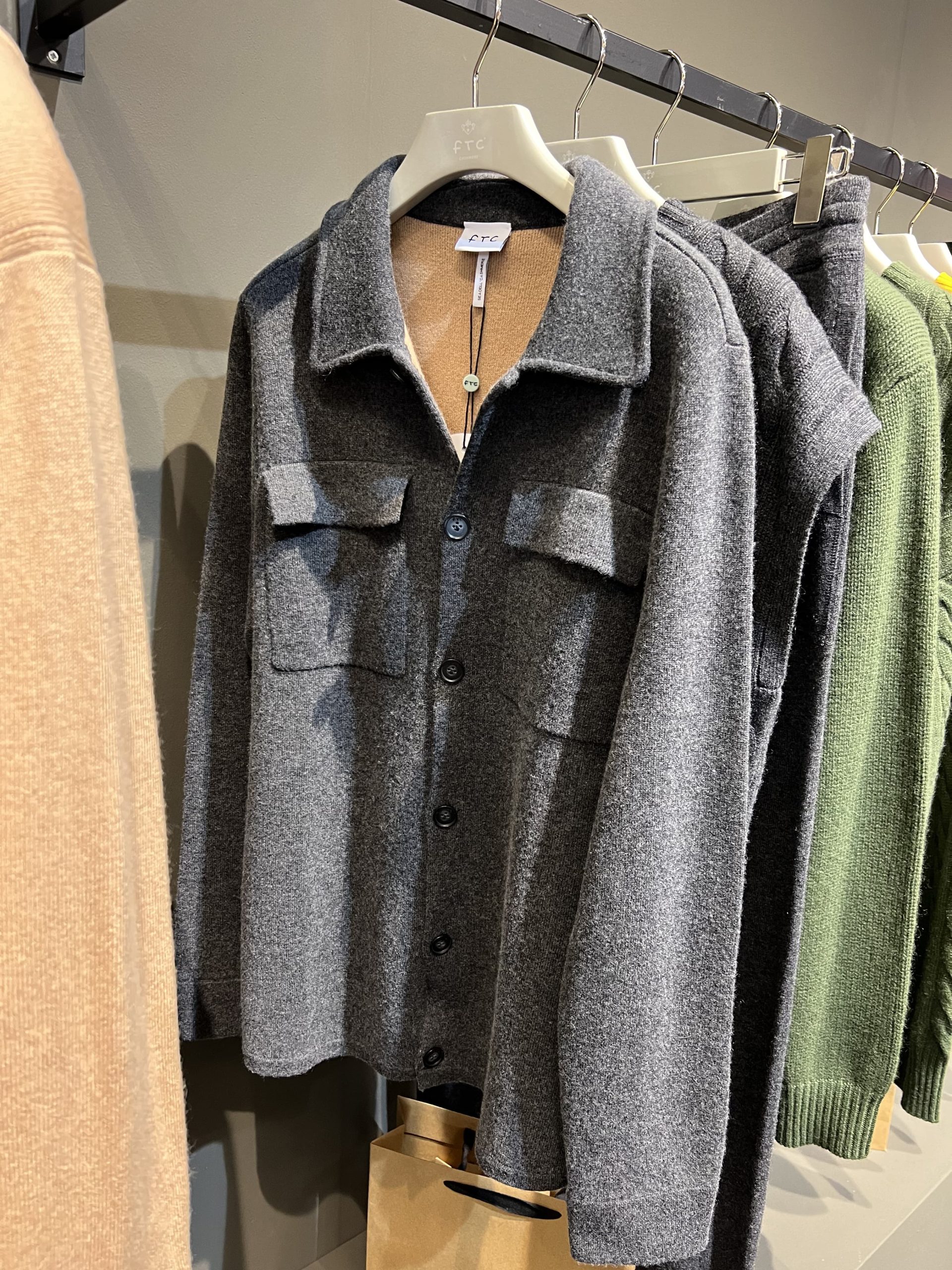
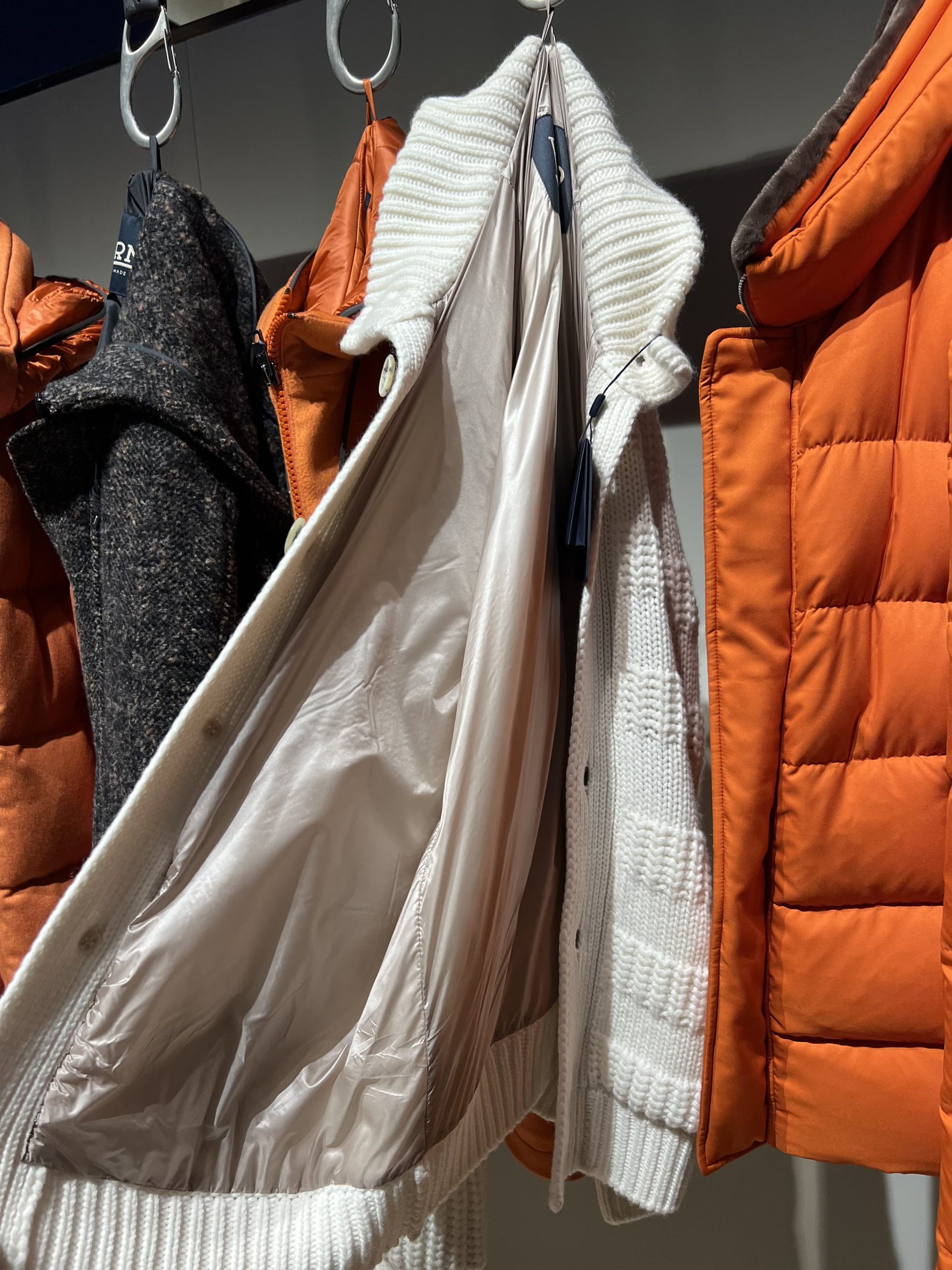




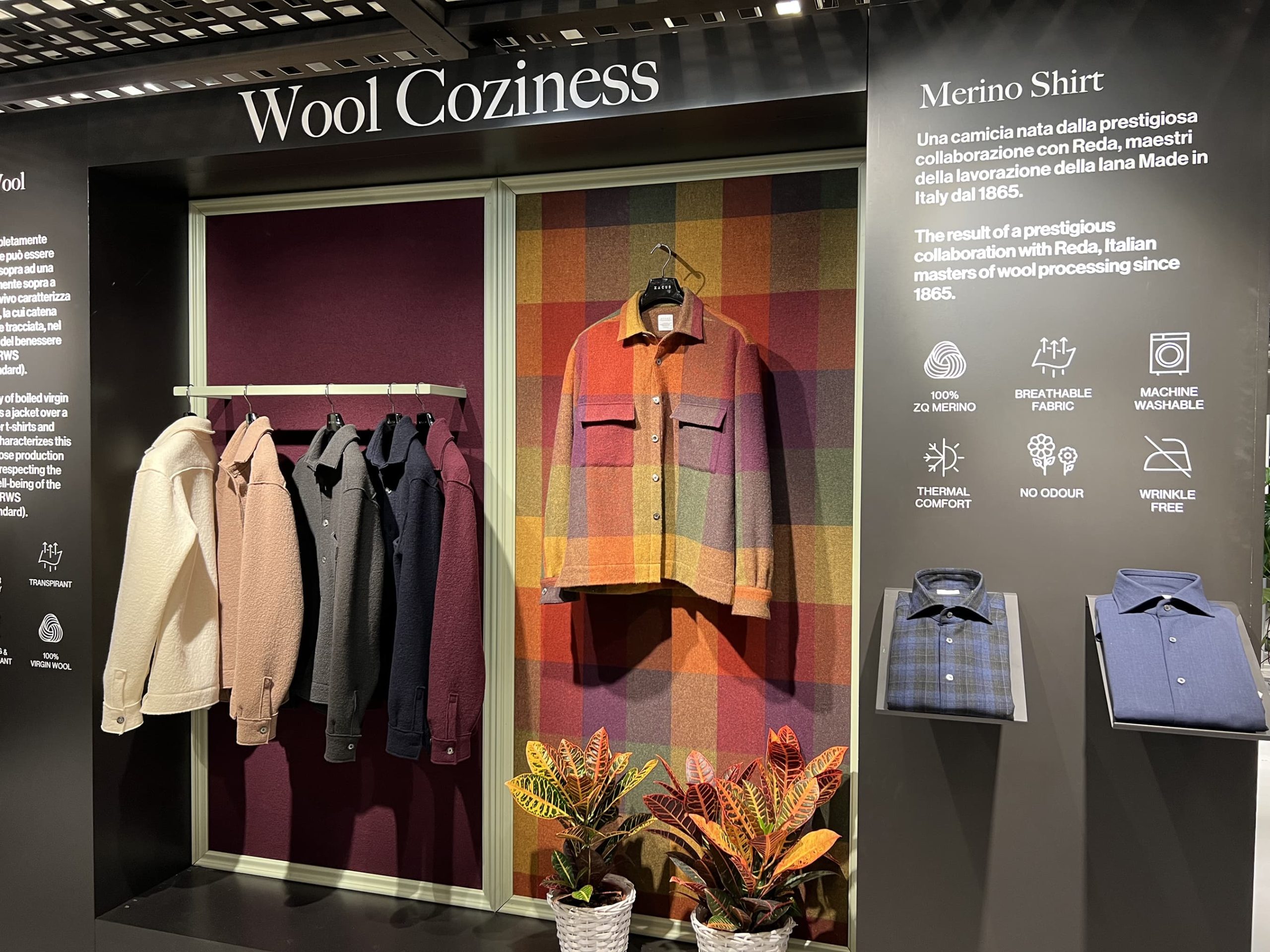
Across the fair, the over 700 brands, sought to take their categories into new directions with unexpected outcomes that all spoke to the easing of structure around the body. Knitted cardigans were lined with a detachable quilted gilet at Duno, tailored tapered pants were merged with a sweat pant-style waistband for all-day ease at Suns Boards, while much of the tailoring on display was devoid of an inner lining.
As silhouettes become as relaxed as dress codes, garments are now falling softly from the shoulder and enveloping in cosy textures.
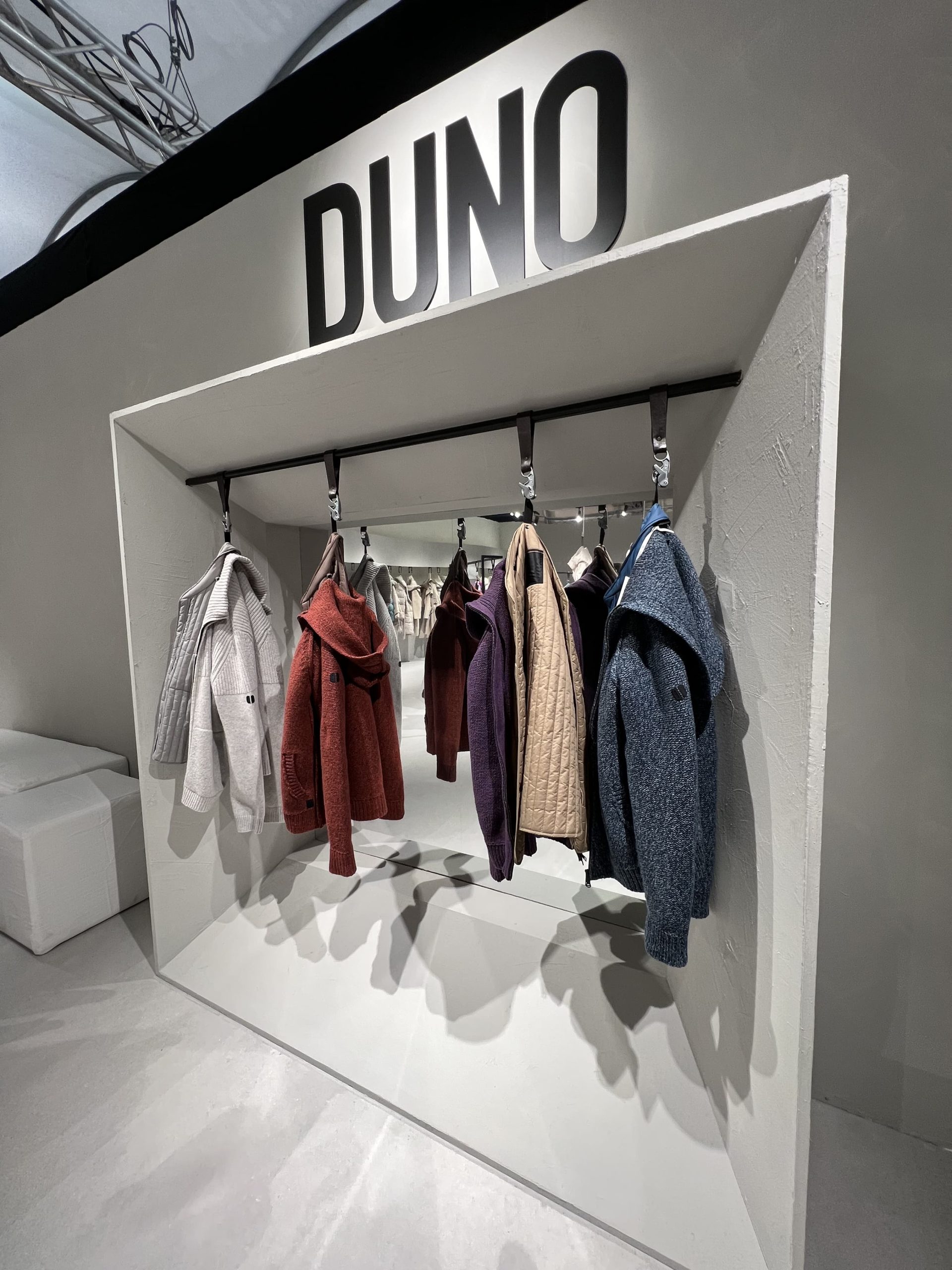
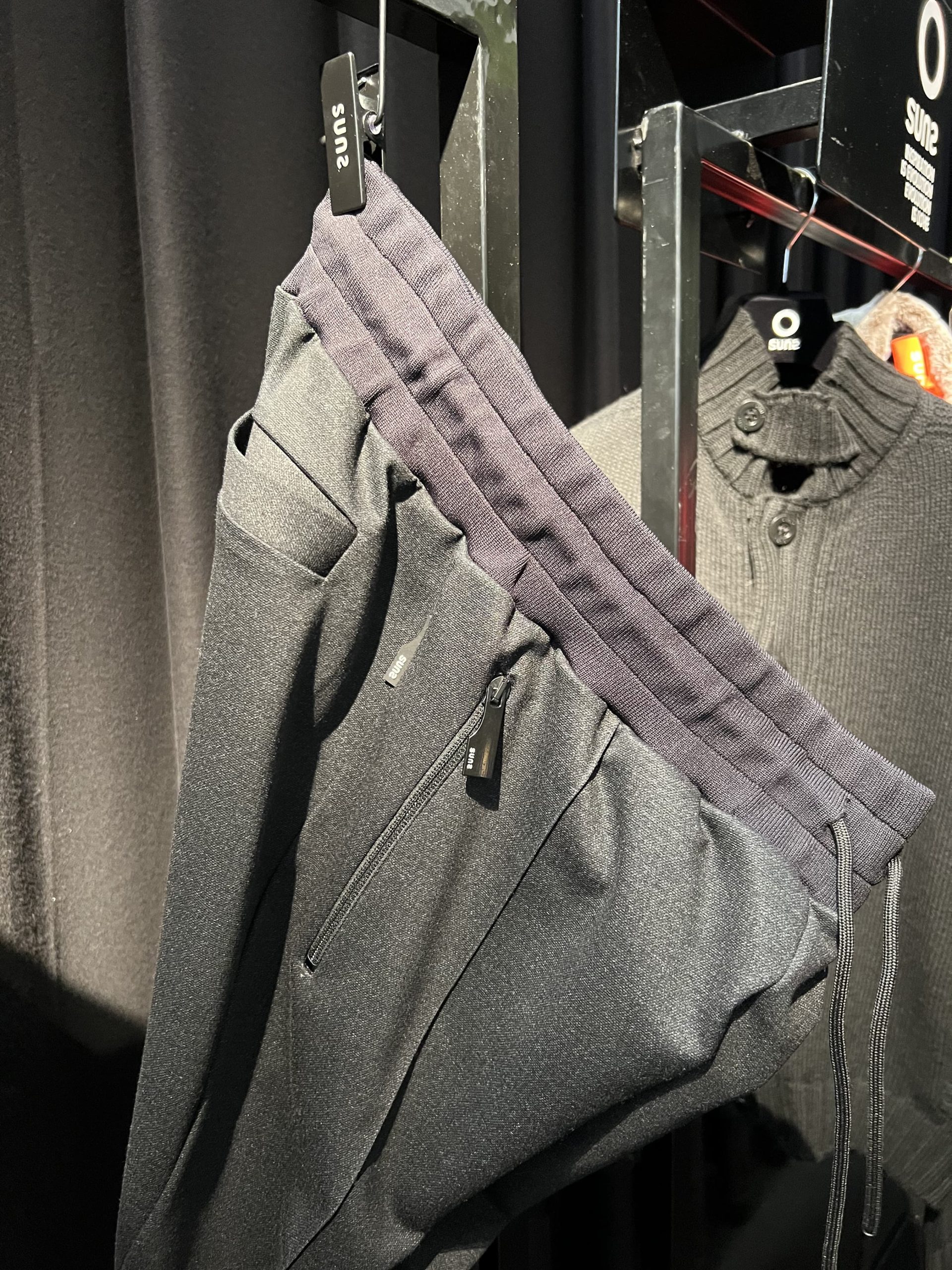



Sustainability through Durability
As the priority for consumers shifts, sustainability may not be as important a driving factor in their purchasing decisions as it has been in the last few years. This does not mean that brands should take their eye off the ball when it comes to their ESG strategies and investing in sustainable or more realistically responsible (as many are waking up to the realisation of the large-scale work that needs to be done) practices across their supply chains, as international governing bodies have made it clear that legislation and accountability measures are coming down the line in the future.
It was promising then, to see exhibitors across the fair take on board their eco-responsibilities and dedicate themselves to better practices. This was widely seen in the outdoor category with names such as Holden using consumer traceable, recycled down on their puffer jackets that have been waterproofed with PFC-free DWR (durable water repellent) coatings, and across a number of footwear brands including The Shoe of Life project, who produce shoes that can be worn for 20 years, through a cleaning, repair, and return-to-soil program.
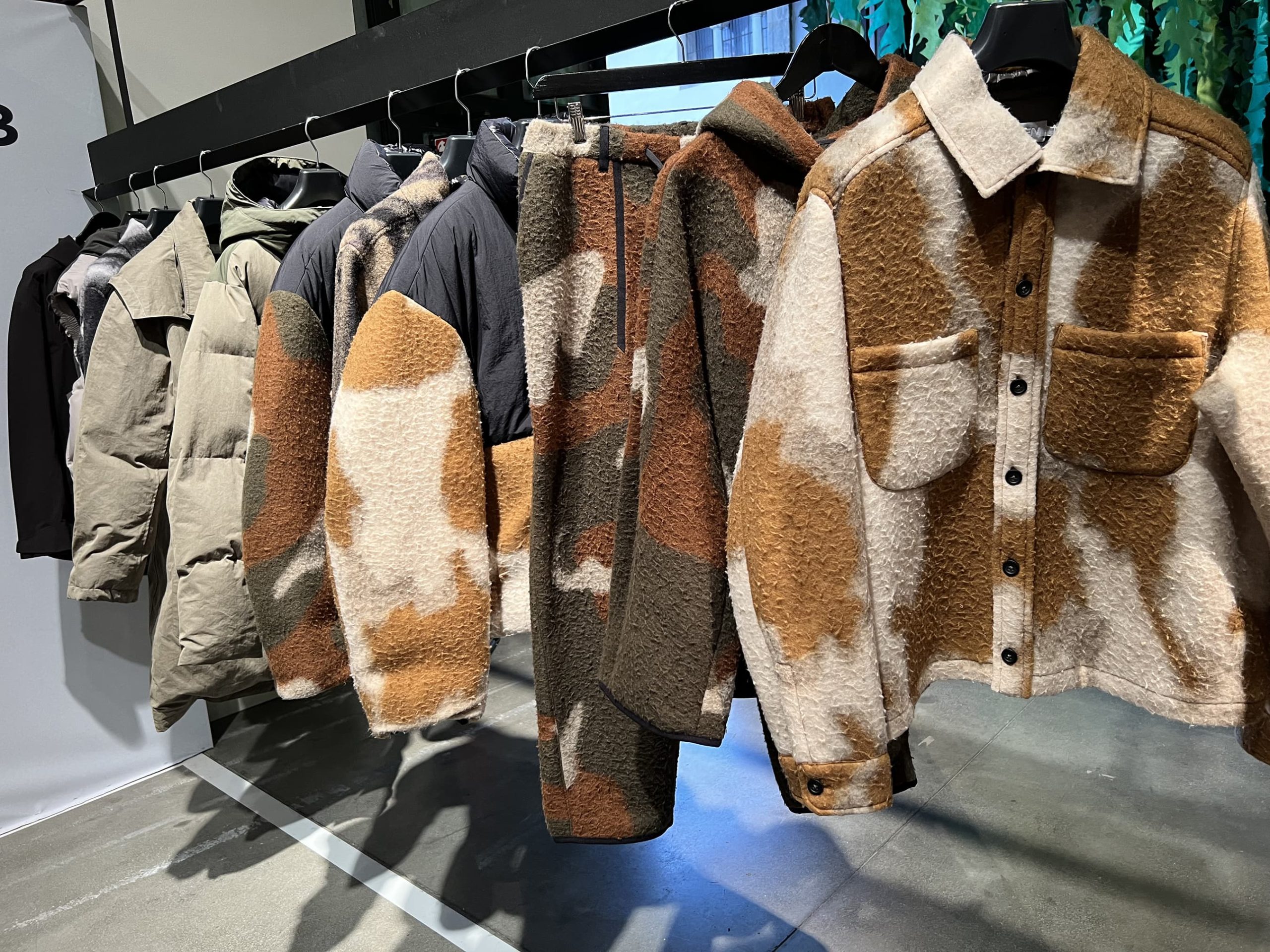
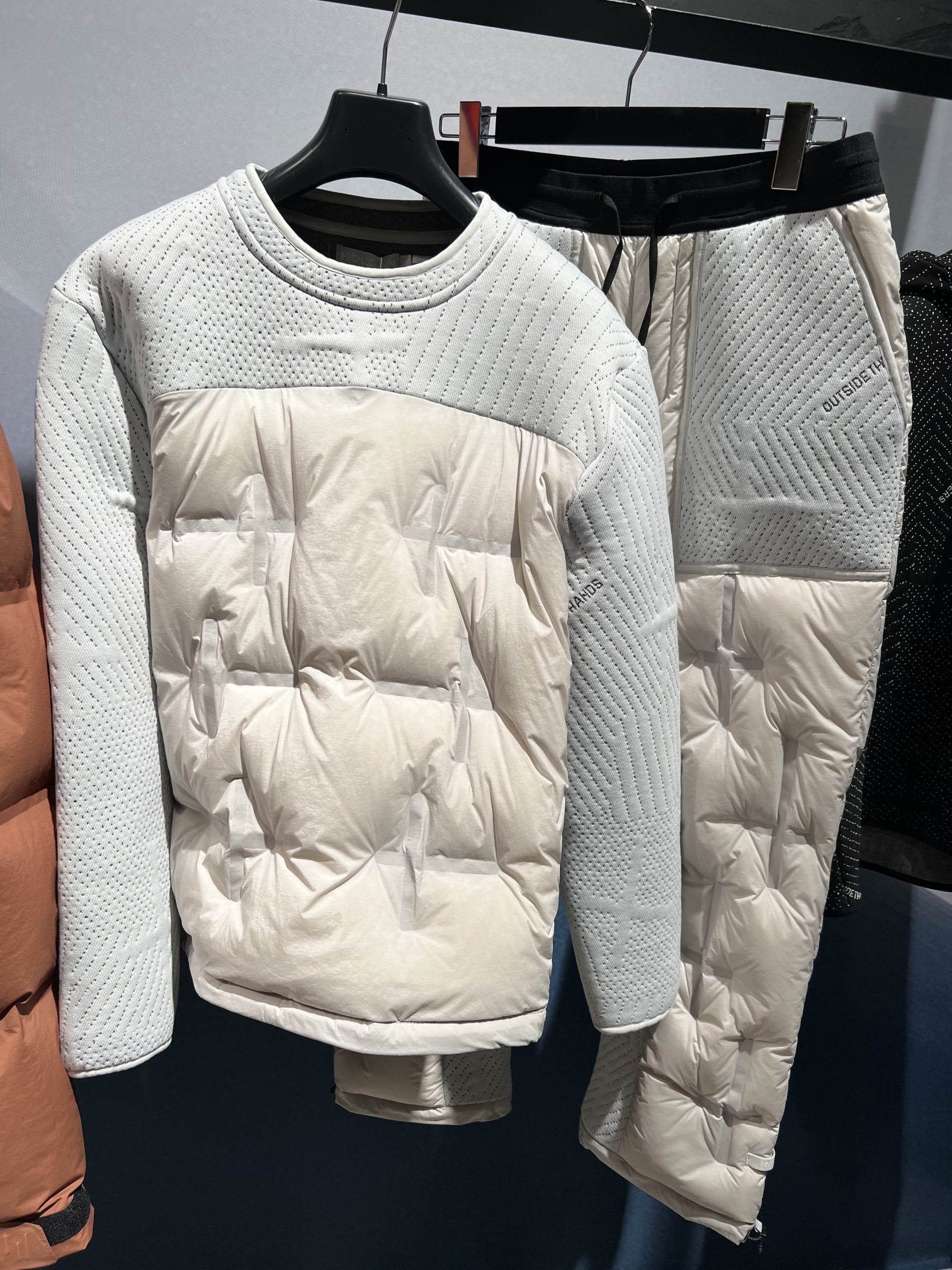

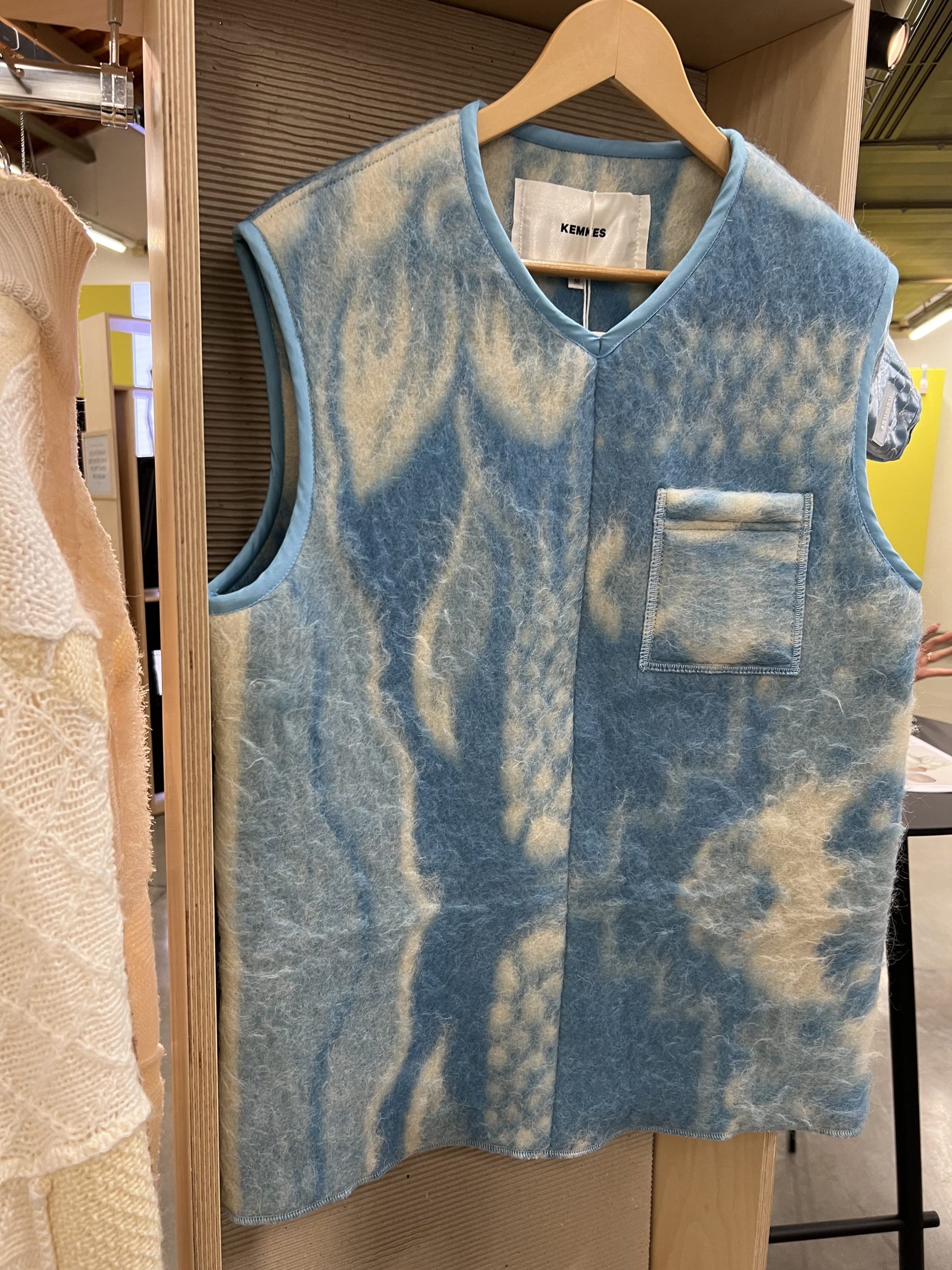
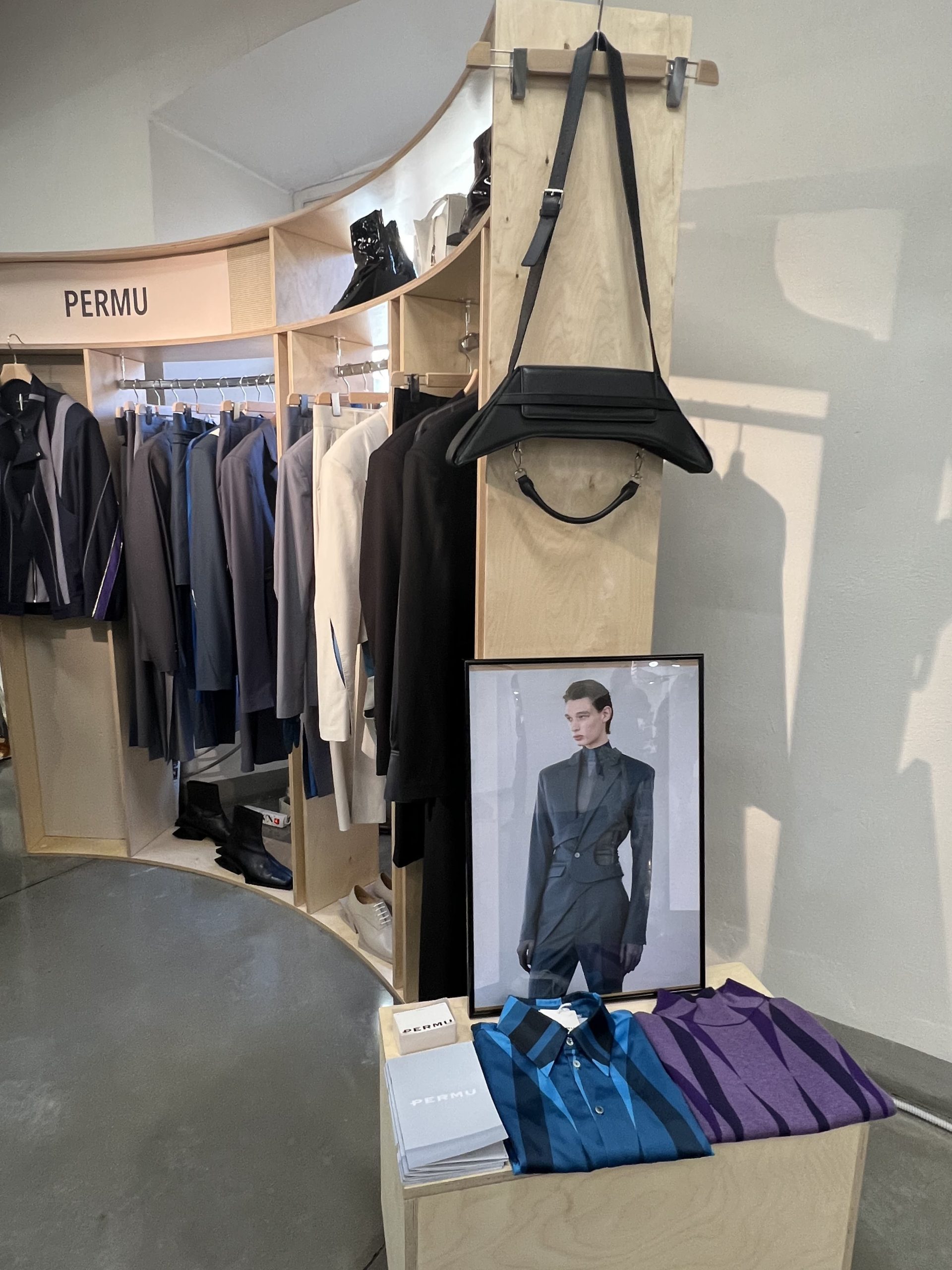
BRAND FOCUS – the London-based Permu brand (an abbreviation of permutation) lead by Creative Director Heyun Pan is focussed on finding the relationship between the garment and the human body and fusing that with art and fashion. Pan explained at the fair how his research “exploring how the covering of the body can create elegance will reinvent the sexy masculine image”. As a brand housed within the SIStyle space, their production processes and sourcing mean that they use recycled wool from British and Italian mills, AI systems to reduce waste during the pattern cutting stage, with an ultimate goal of “creating a connection between the customer and the product, to help each garment have a longer life”.

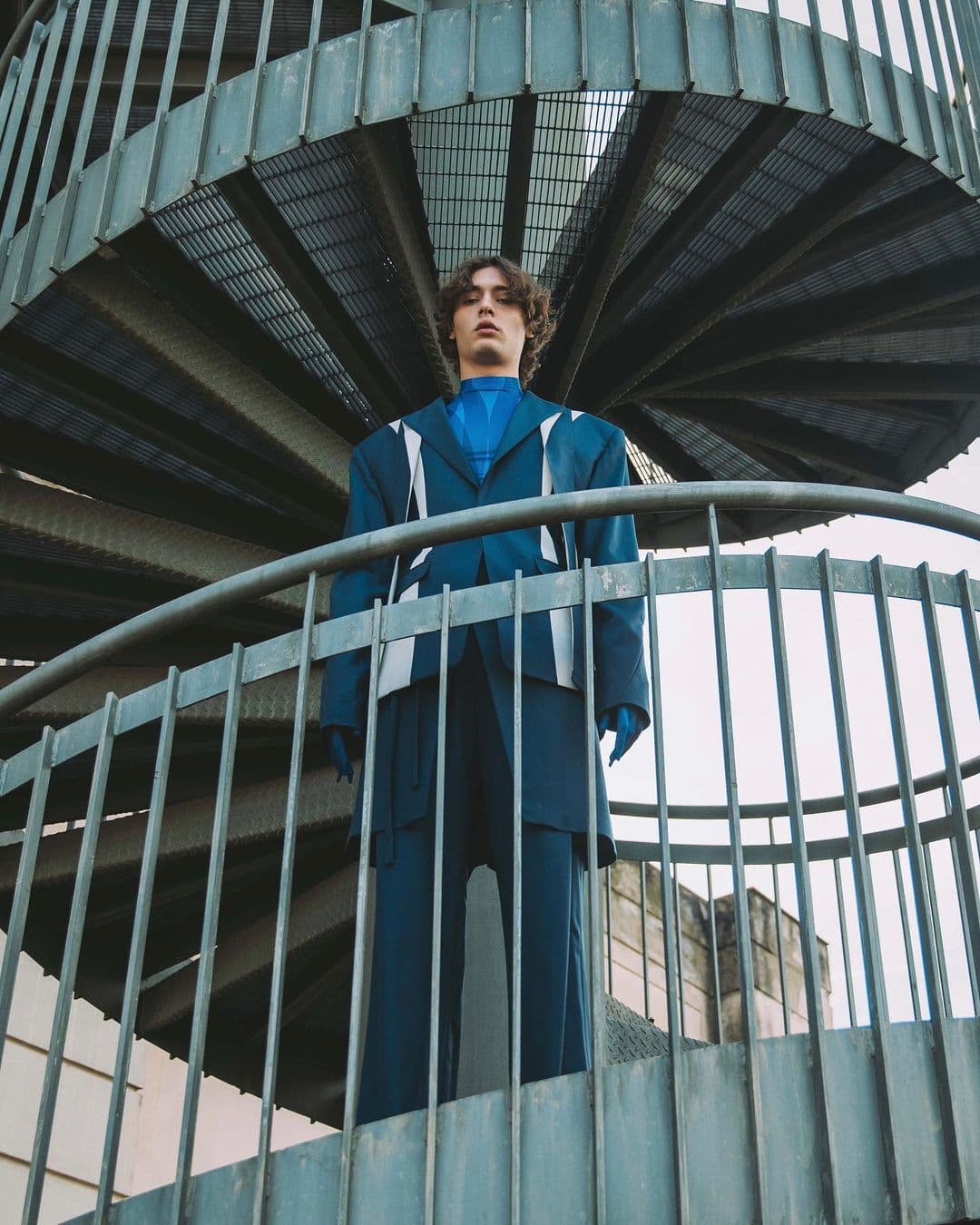


The emphasis on natural fabrics and durability are traits that Italian fashion and manufacturing are renowned for. So, there was a sense of returning to nature as a way to innovate, something that may now be considered radical but in producing in partnership with the environment, Pitti Uomo was proposing a more connected foundation for the menswear market to move forward responsibly. The goal was not to try to be perfect or 100% compliant in the area of sustainability (something which has been acknowledged will take time), but what was witnessed was an increased desire by brands to incorporate better buying, sourcing, and manufacturing principles where and when they could, and build on those year-on-year until they are making a major impact.

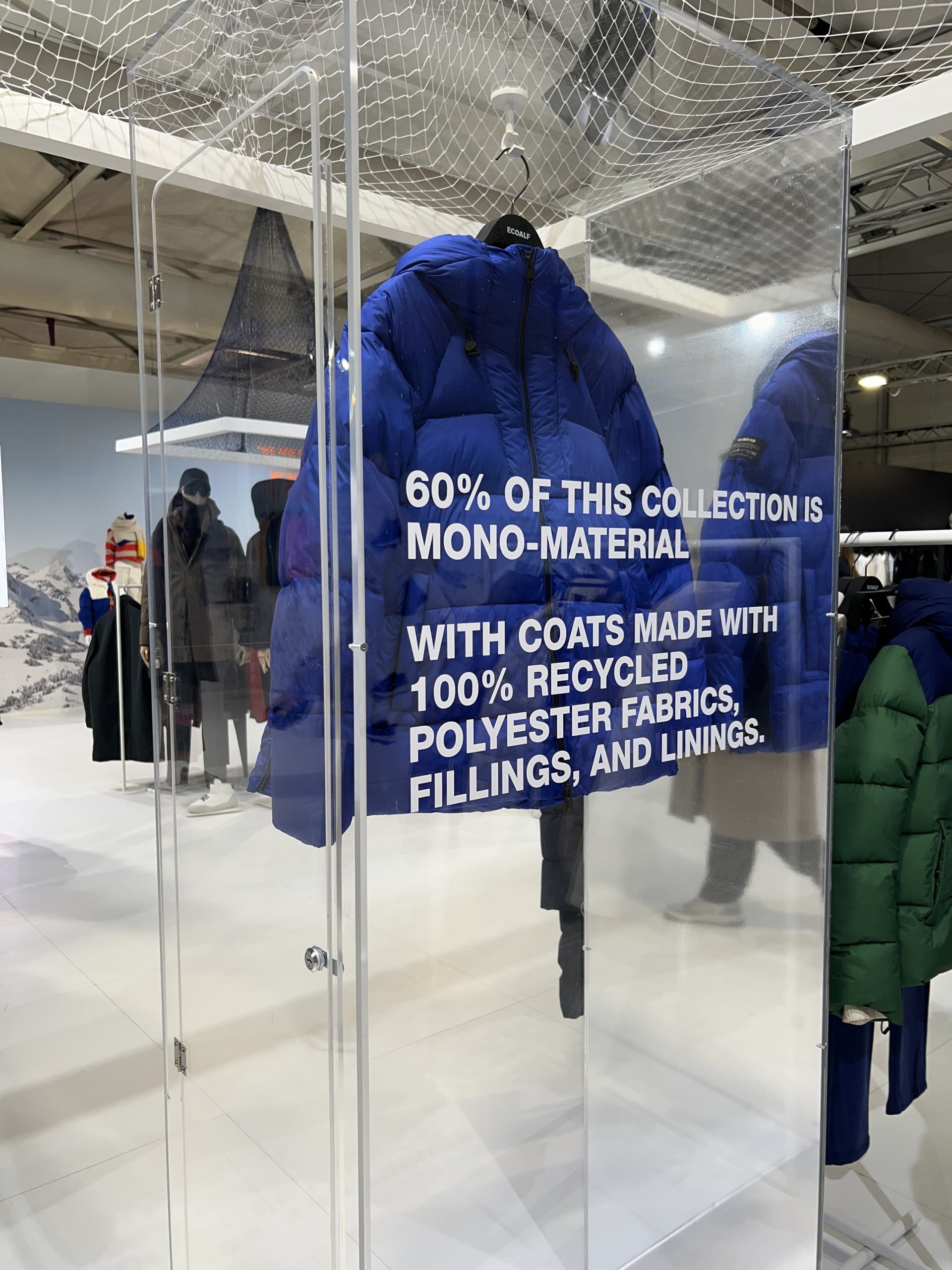
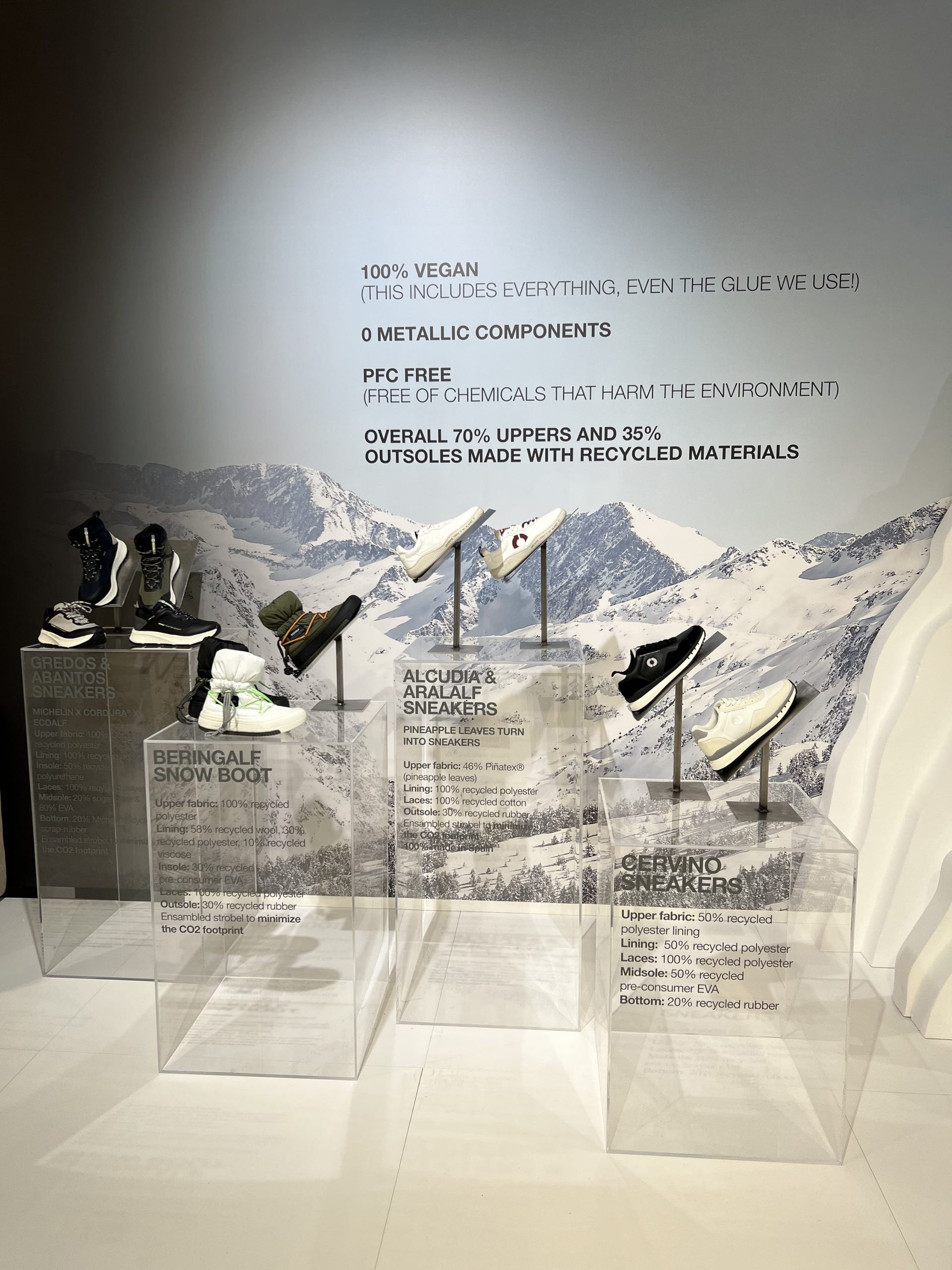

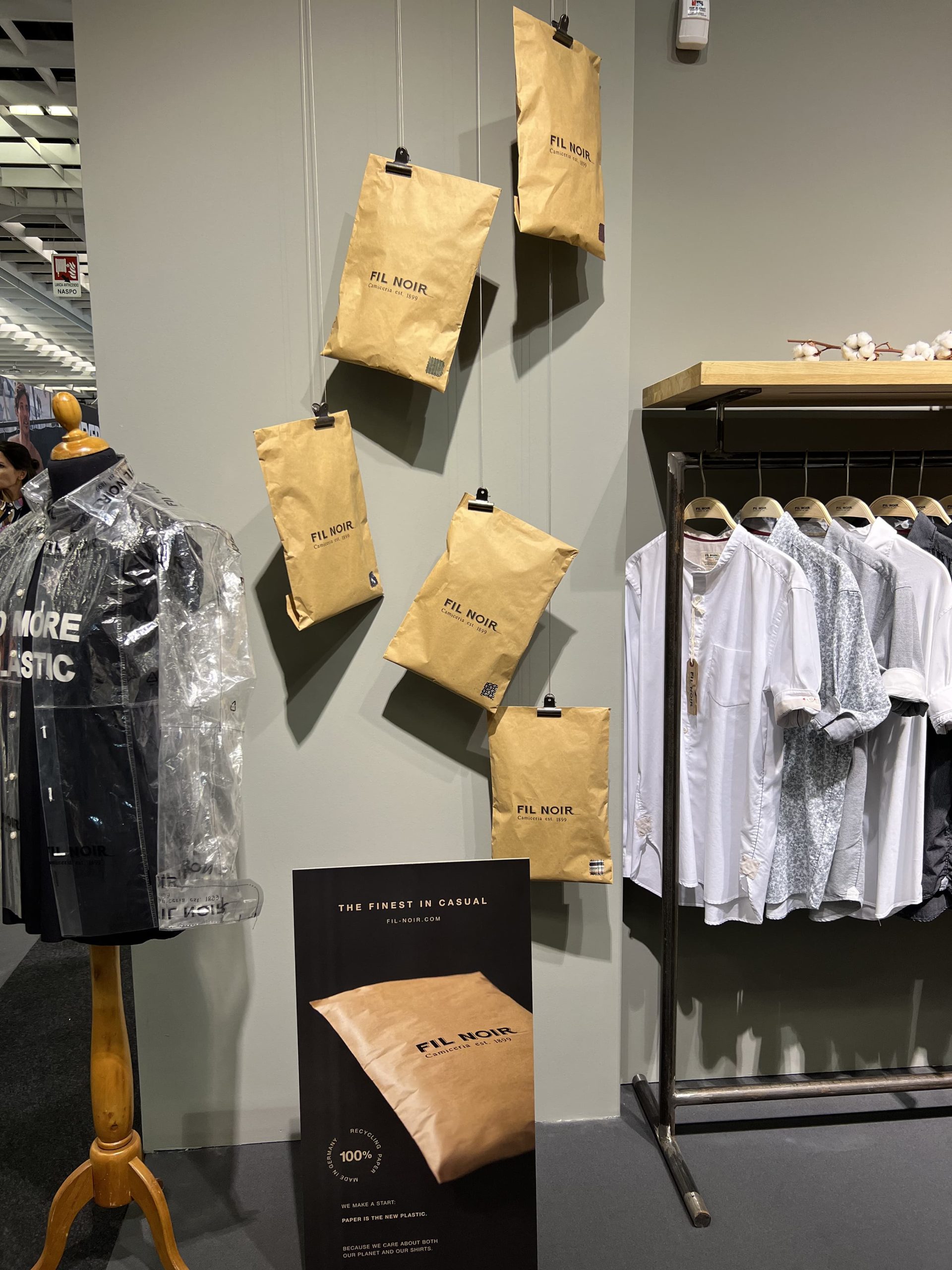
BRANDS FOCUS – Founded in Istanbul by siblings Naz Bileydi Yenigun, and Yigit Bileydi, Turkish brand By the Oak produces workwear that is “thoughtfully designed and responsibly crafted”, with production and fabric locally sourced across turkey to give the brand its originality. All tags and packaging are produced on recycled paper and regenerated fabrics are used to develop classic over transient products.
A fellow Istanbul-based brand who produce in Turkey, Freedom of Space, have developed a capsule collection that up-cycles without waste. Their reconstructed collection reuses the waste of best-selling prints and sews them by hand to make bespoke hoodies, sweatpants, and shorts that are one-size-fits-all, further reducing the need for over-production.
The Shoe of Life is touted as a ‘local circular product’ and was founded by H.Katsukawa who studied shoemaking in Northampton, England before taking up an internship with elusive shoe designer Paul Harnden whose slow approach to handcrafting shoes using traditional techniques influenced H.Katsukawa to incorporate the concept of circularity into his Shoe of Life repair shop, which he has run for the last 12 years. And now with the designs the craftsman presented at Pitti, he is leading the field in demonstrating how biodegradable and long-lasting materials, a clear supply chain, and a dedication to repair is turning the idea of sustainable shoe design into a ‘natural science’.



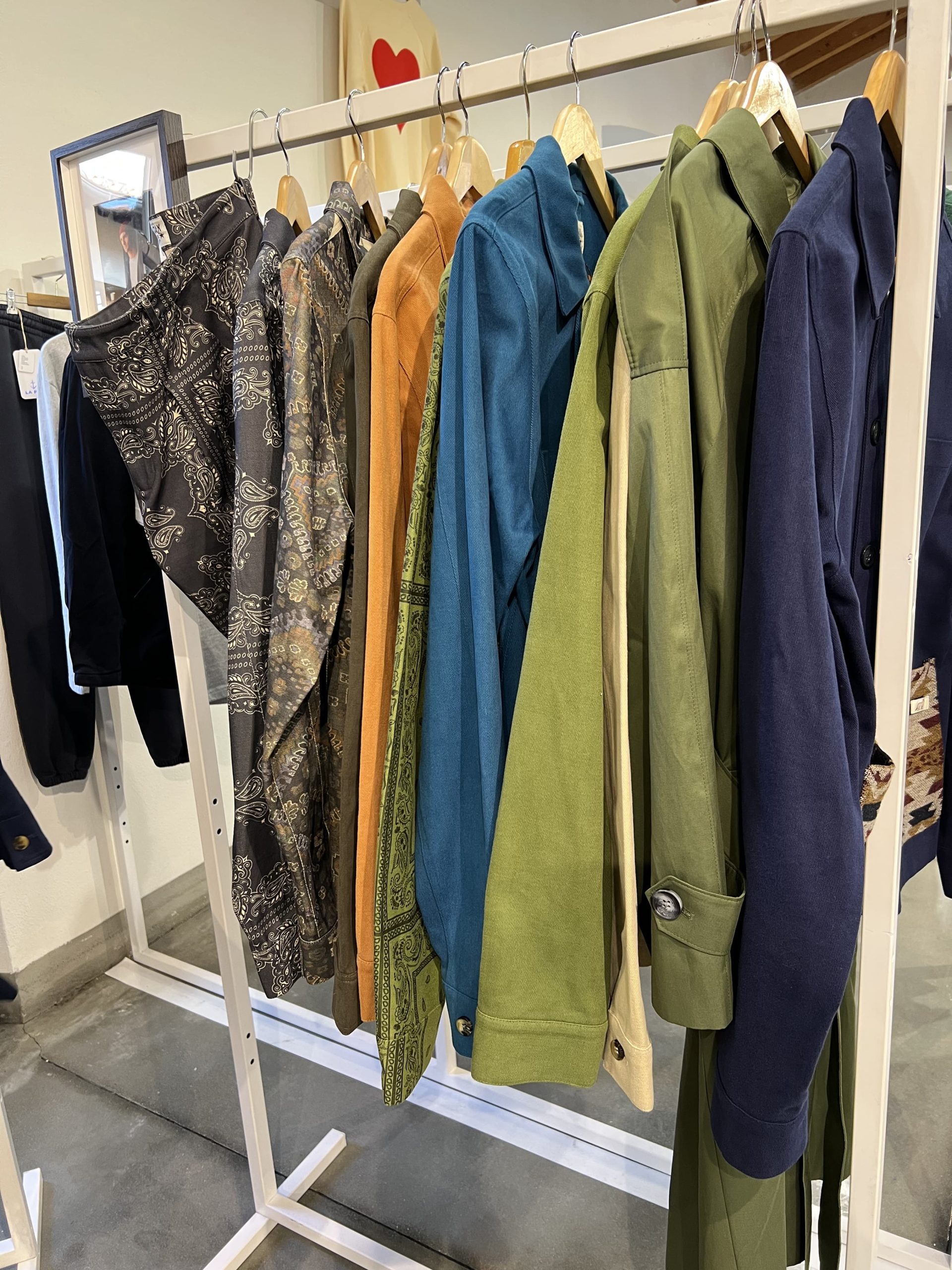






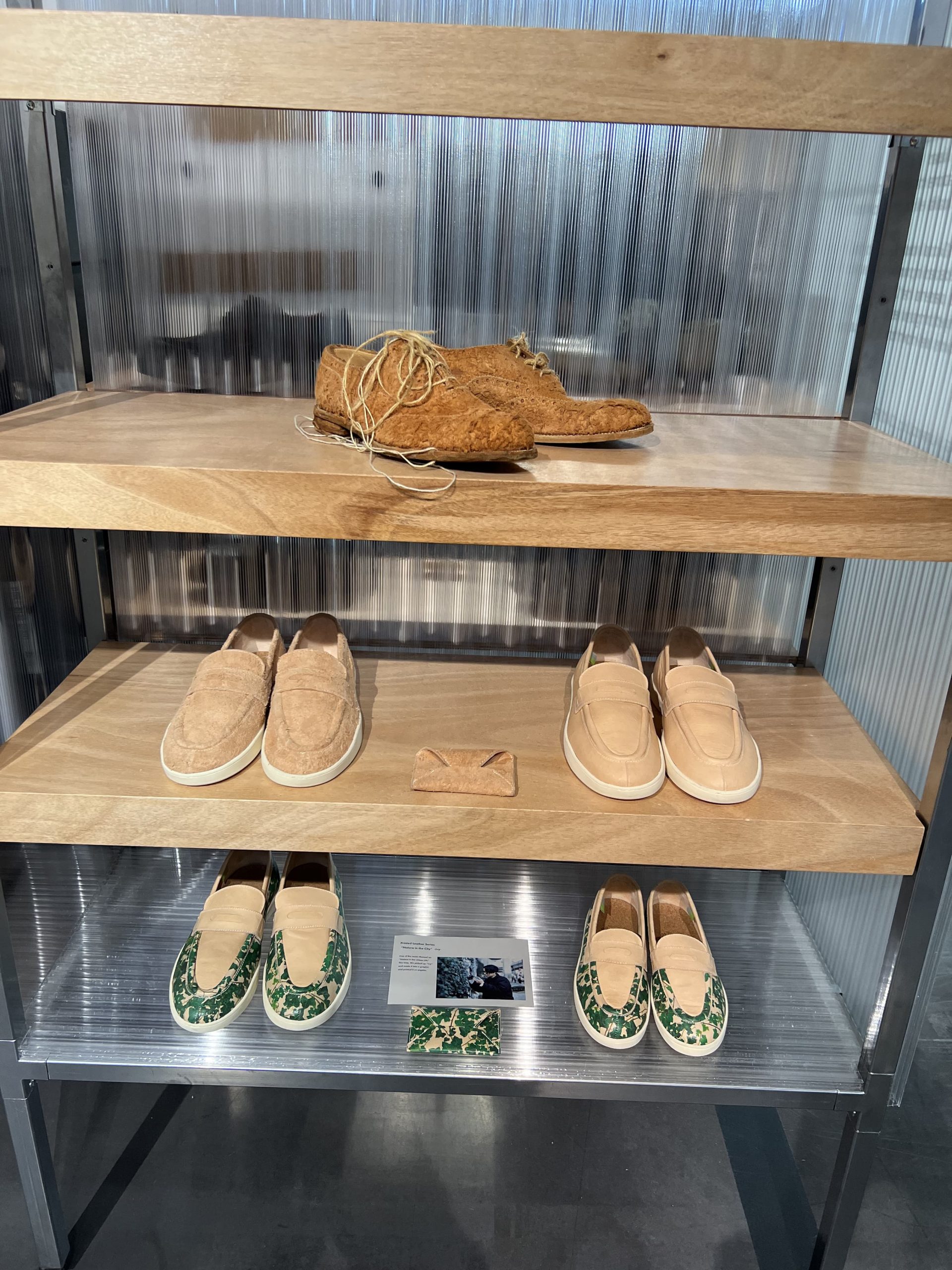
Setting out to command others to follow the ‘Pitti Way’ as the direction of travel for menswear, innovation was presented side-by-side with heritage and tradition, and many exhibitors made a concerted effort to meet the needs of a consumer shift towards a more comfort-driven mindset.
